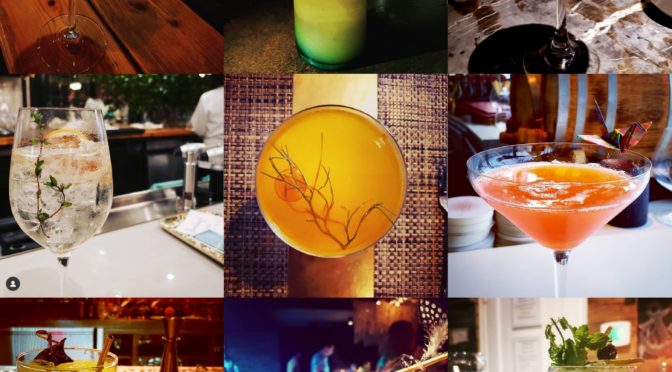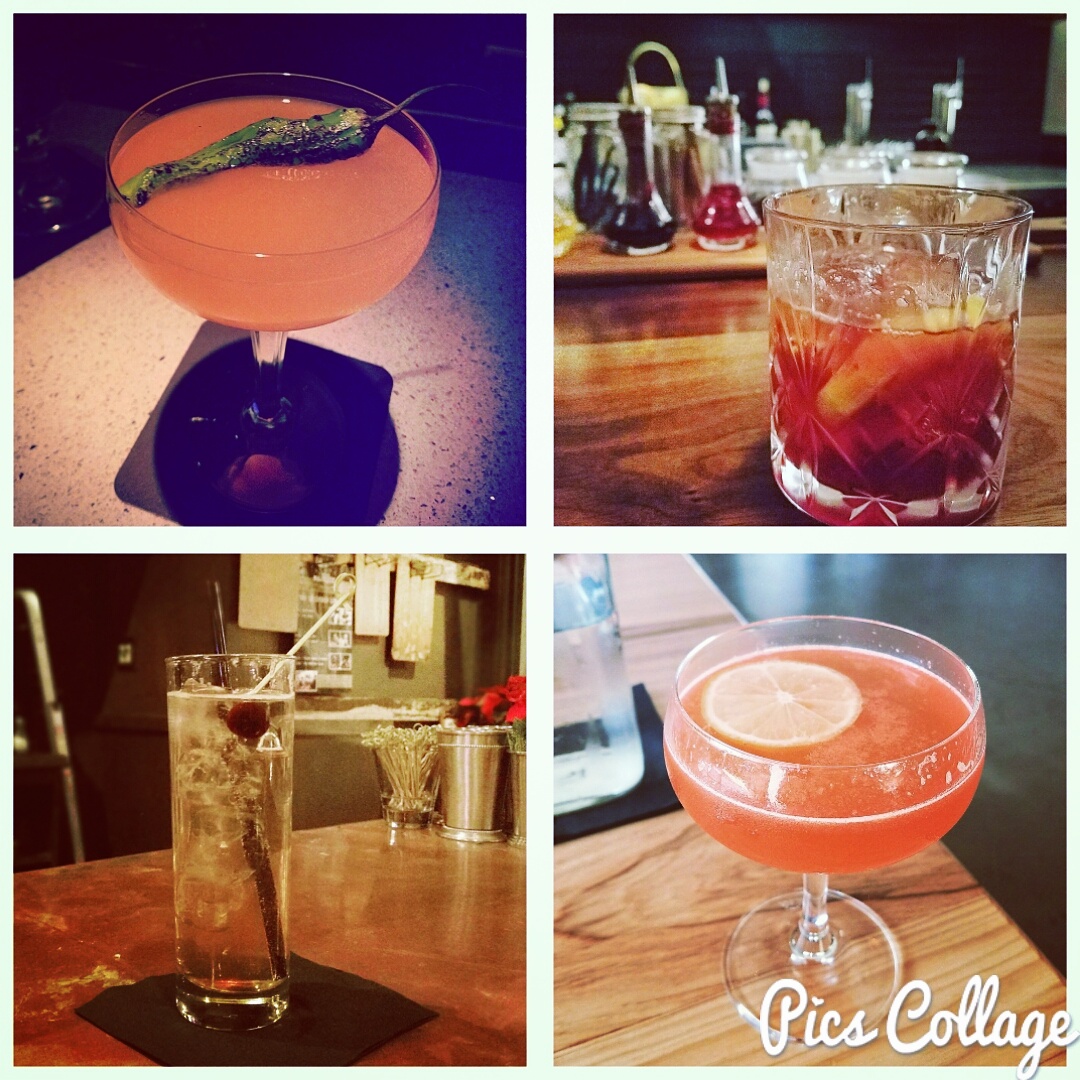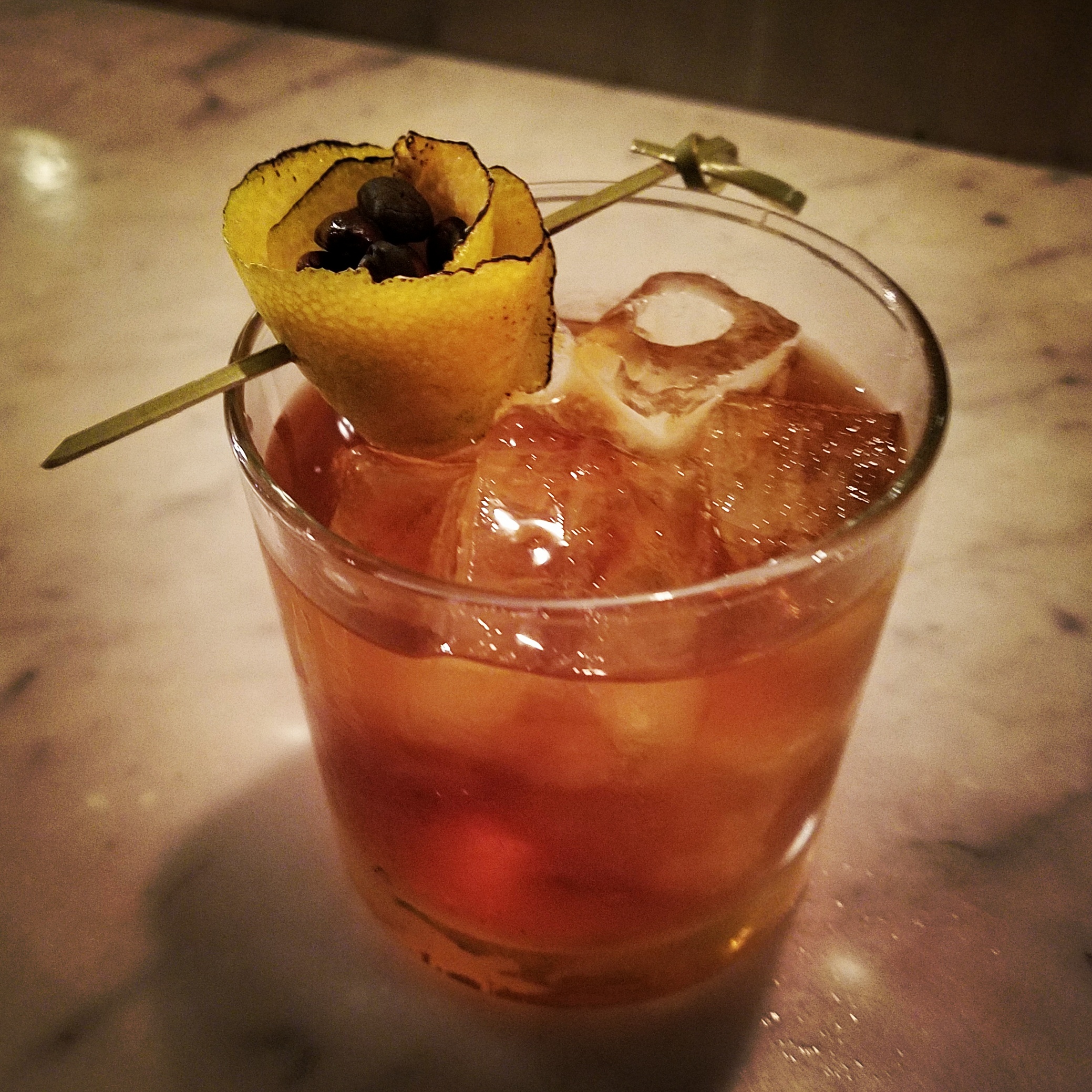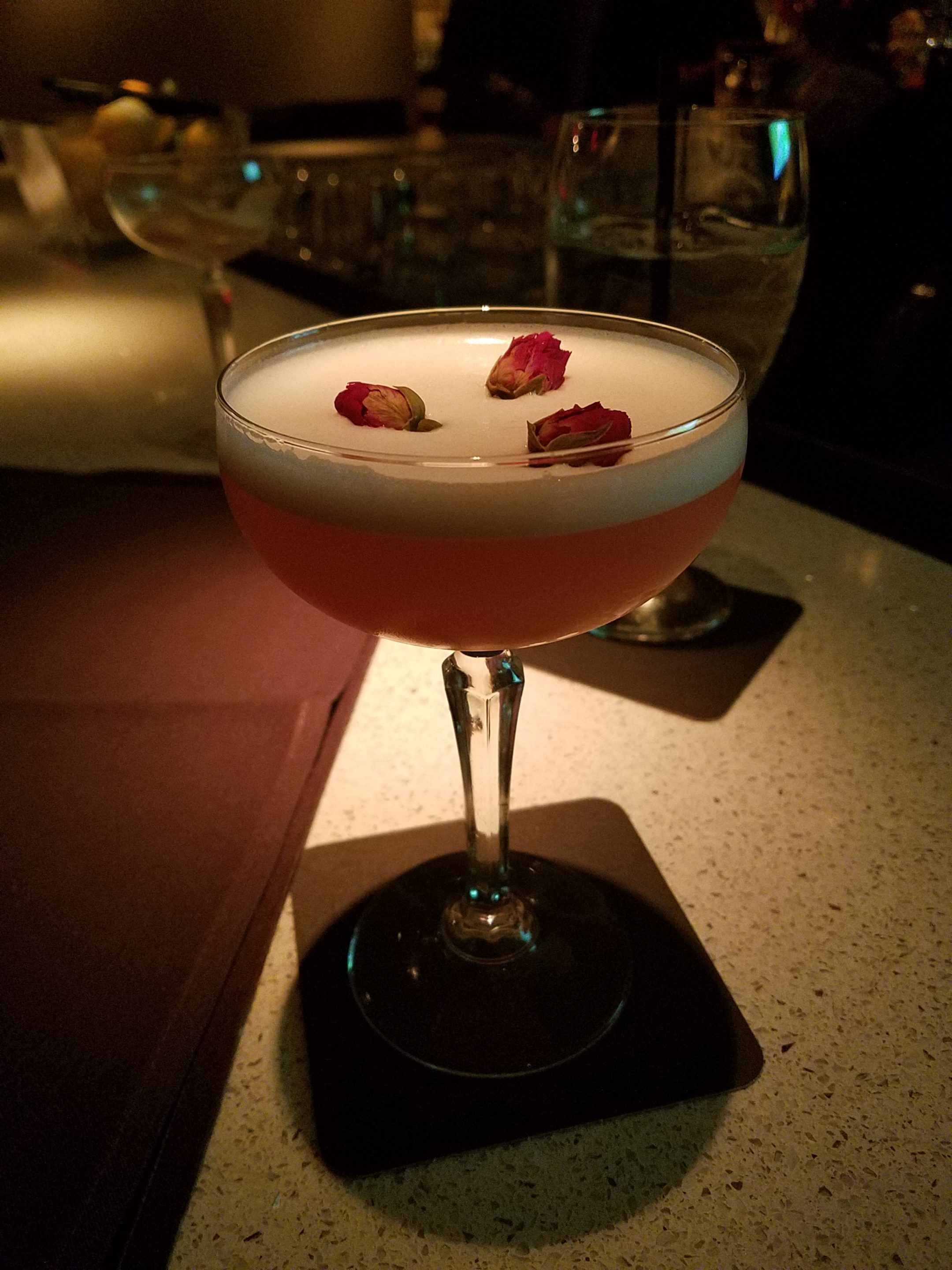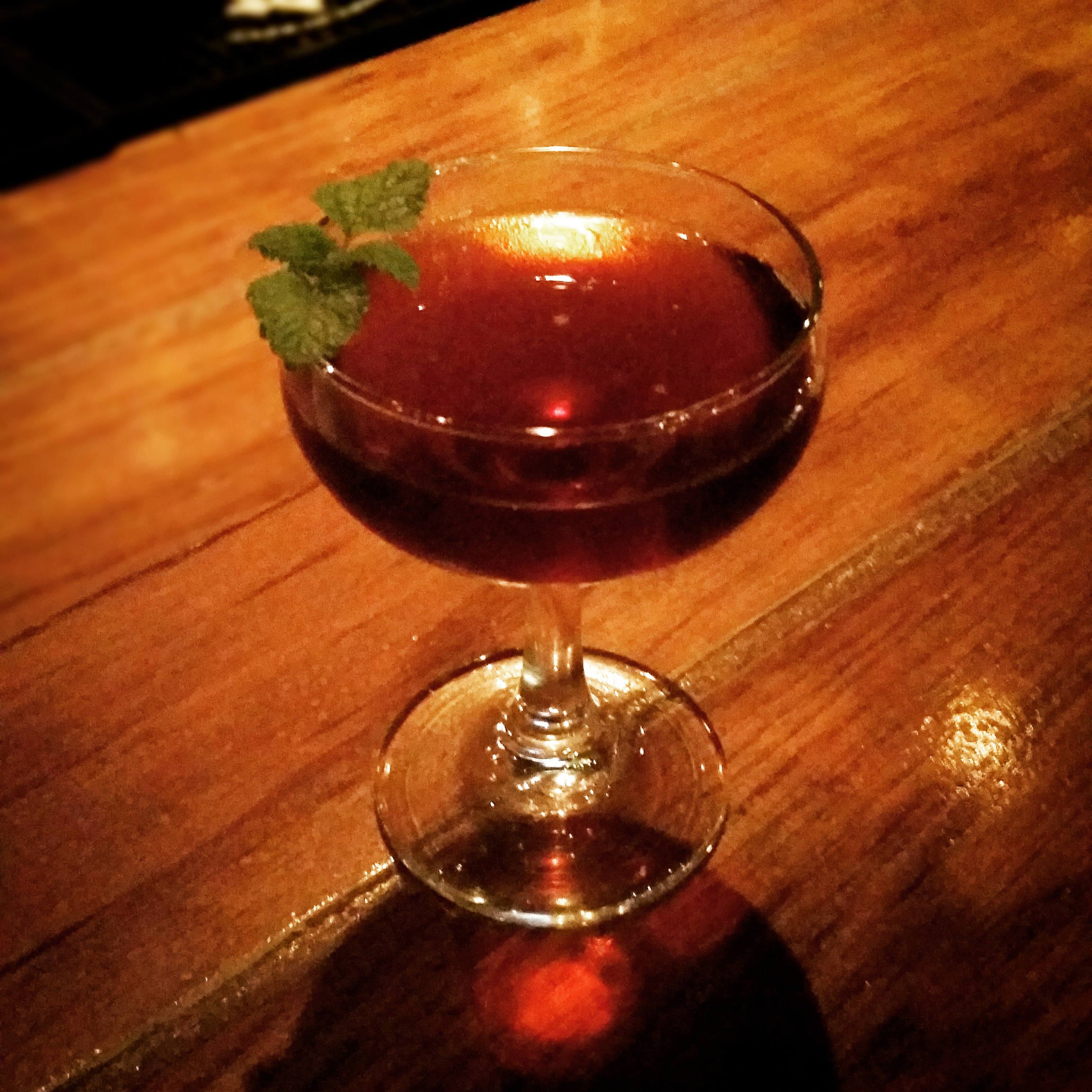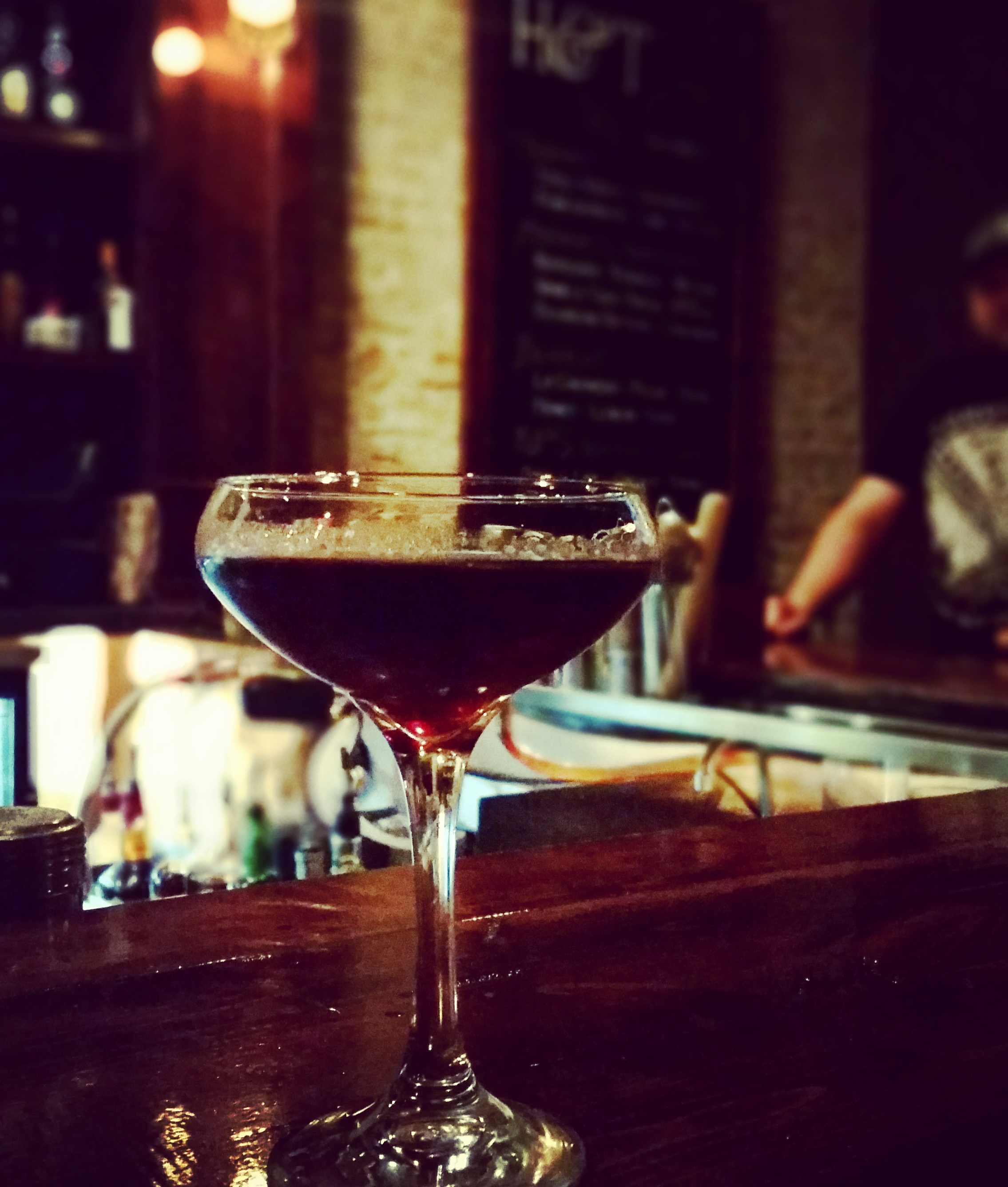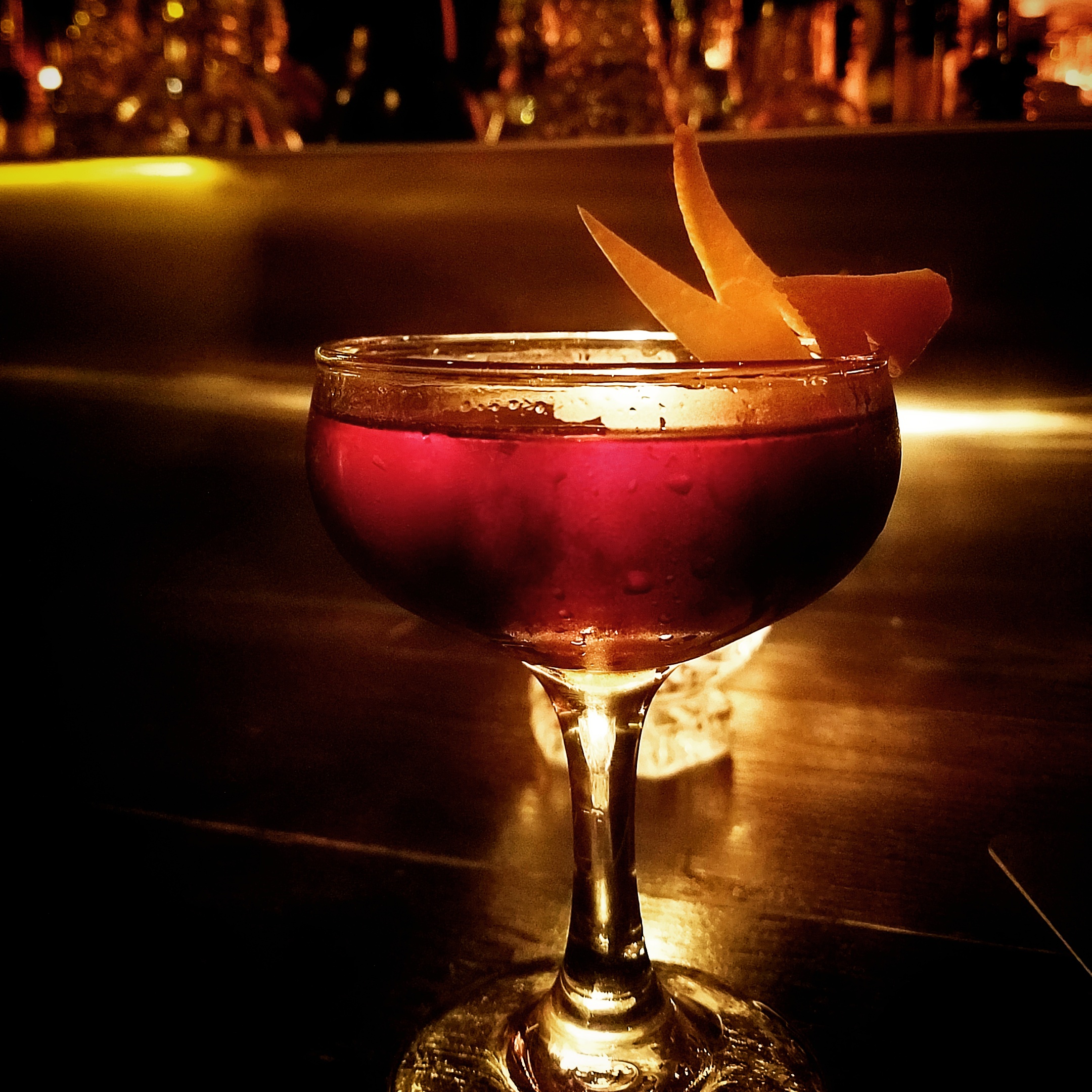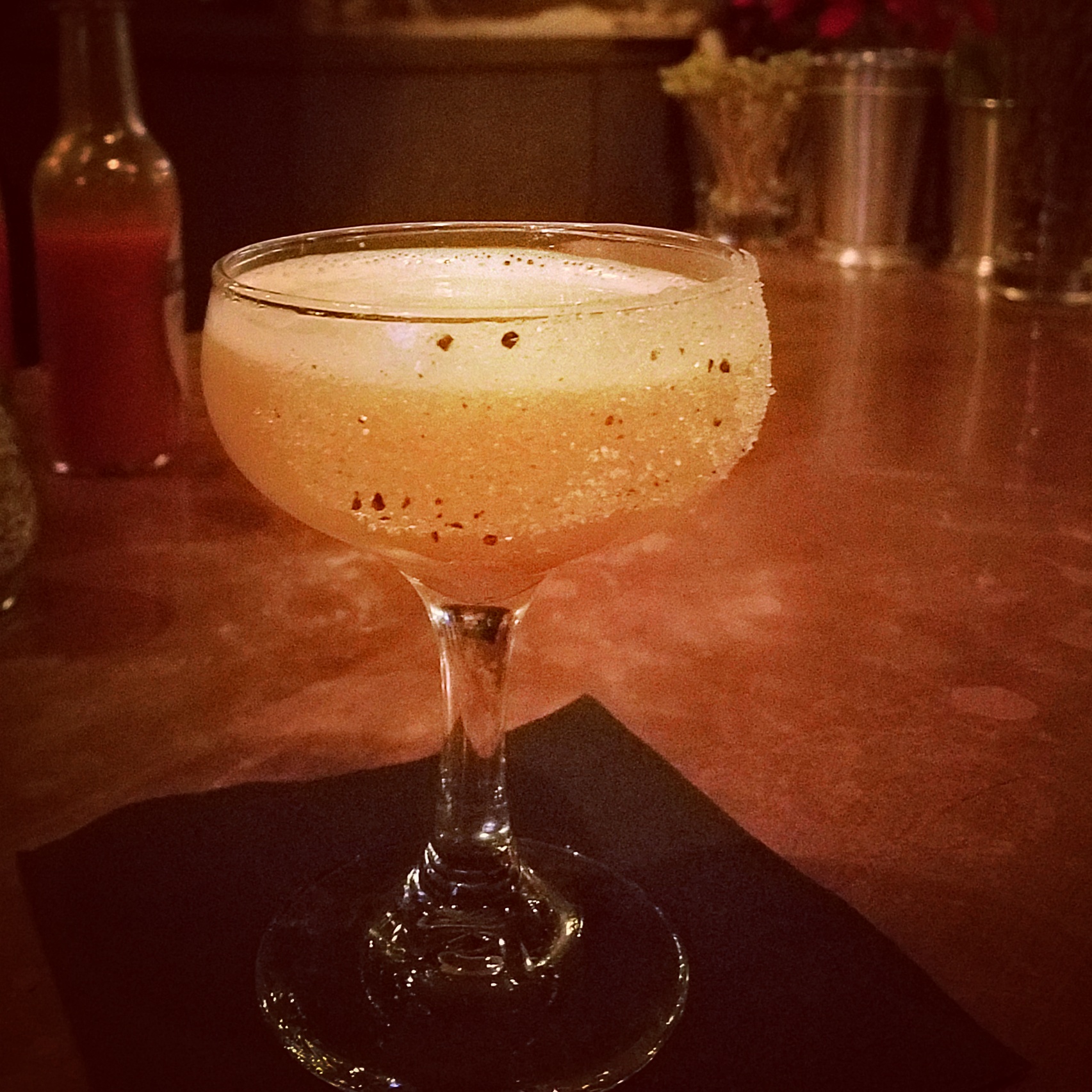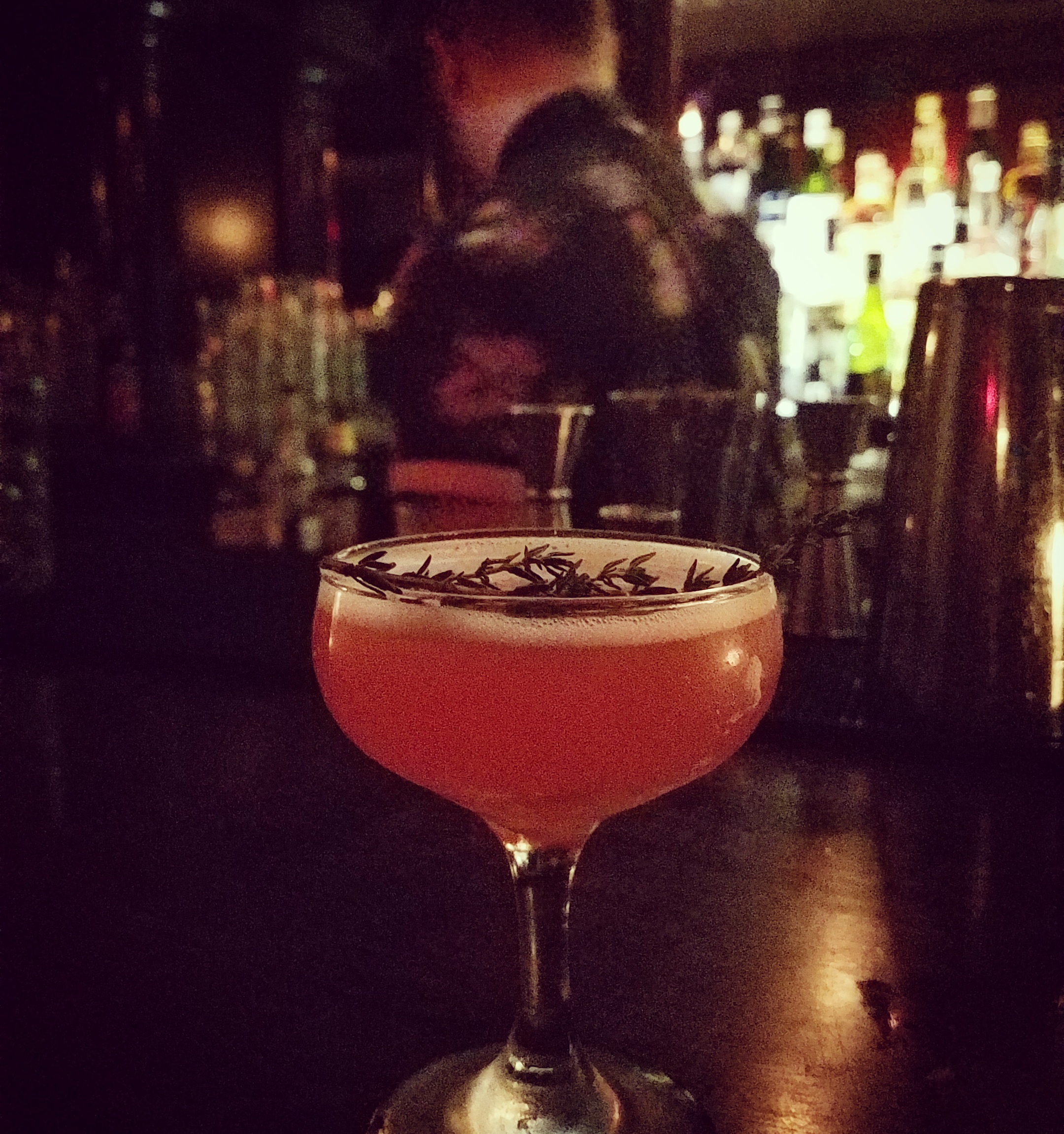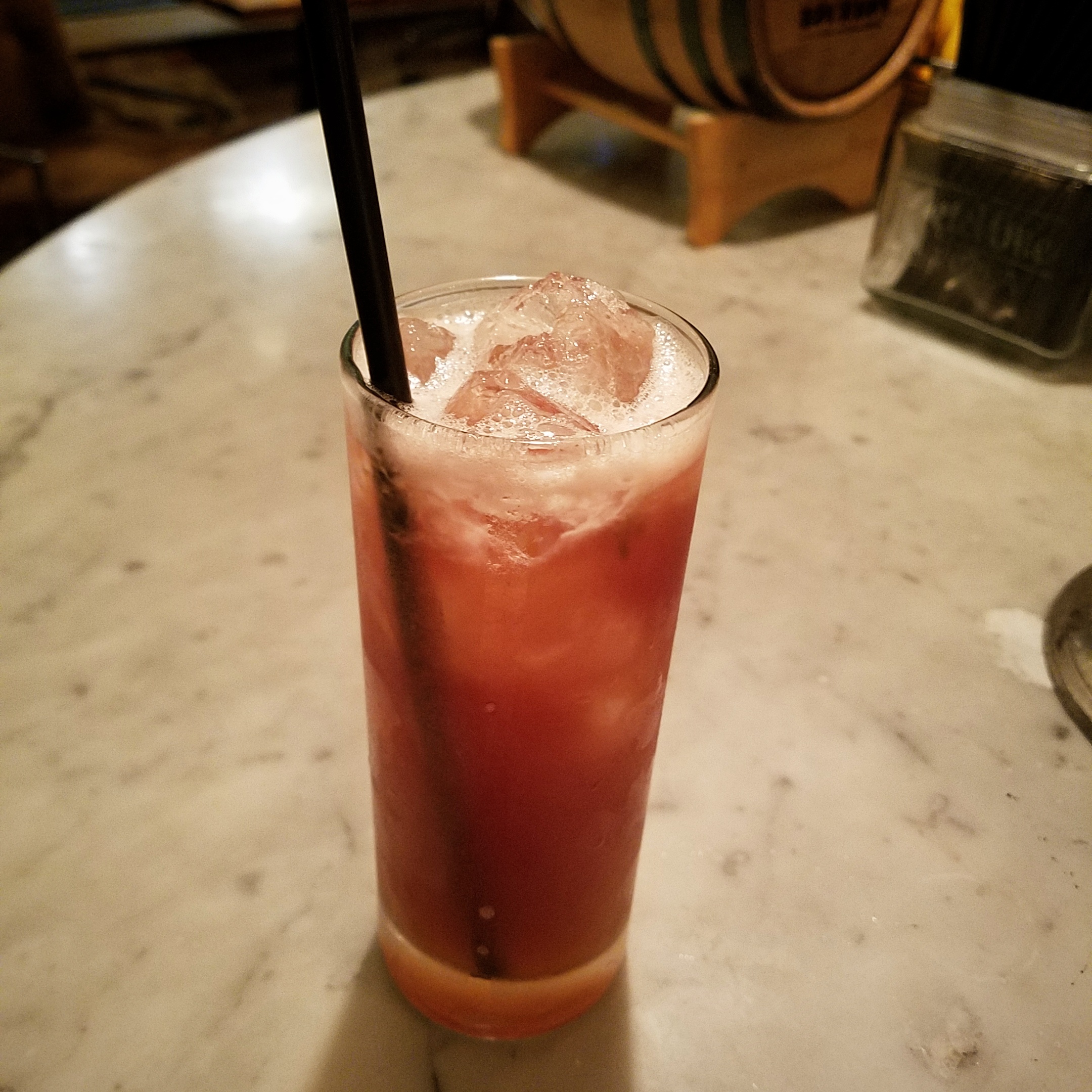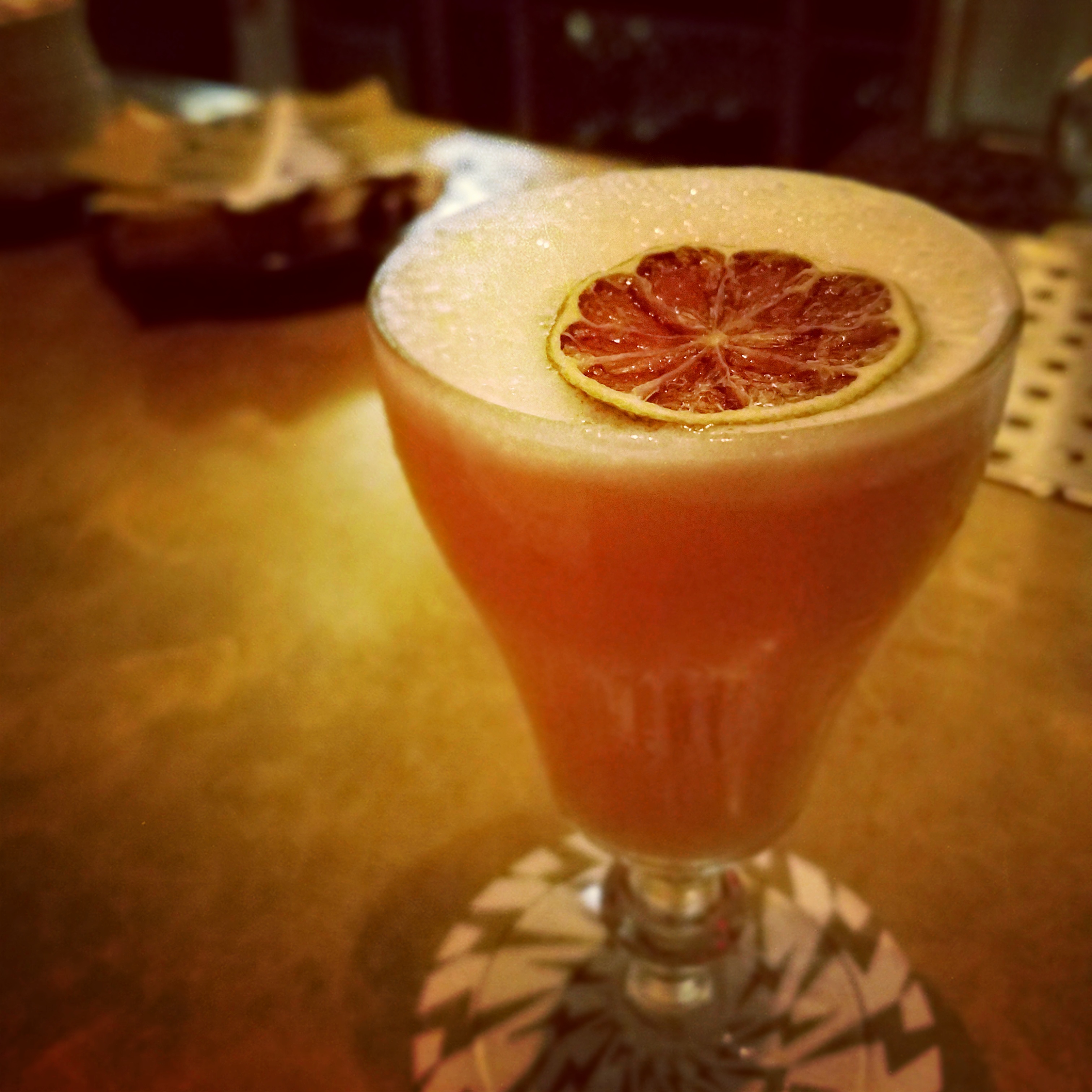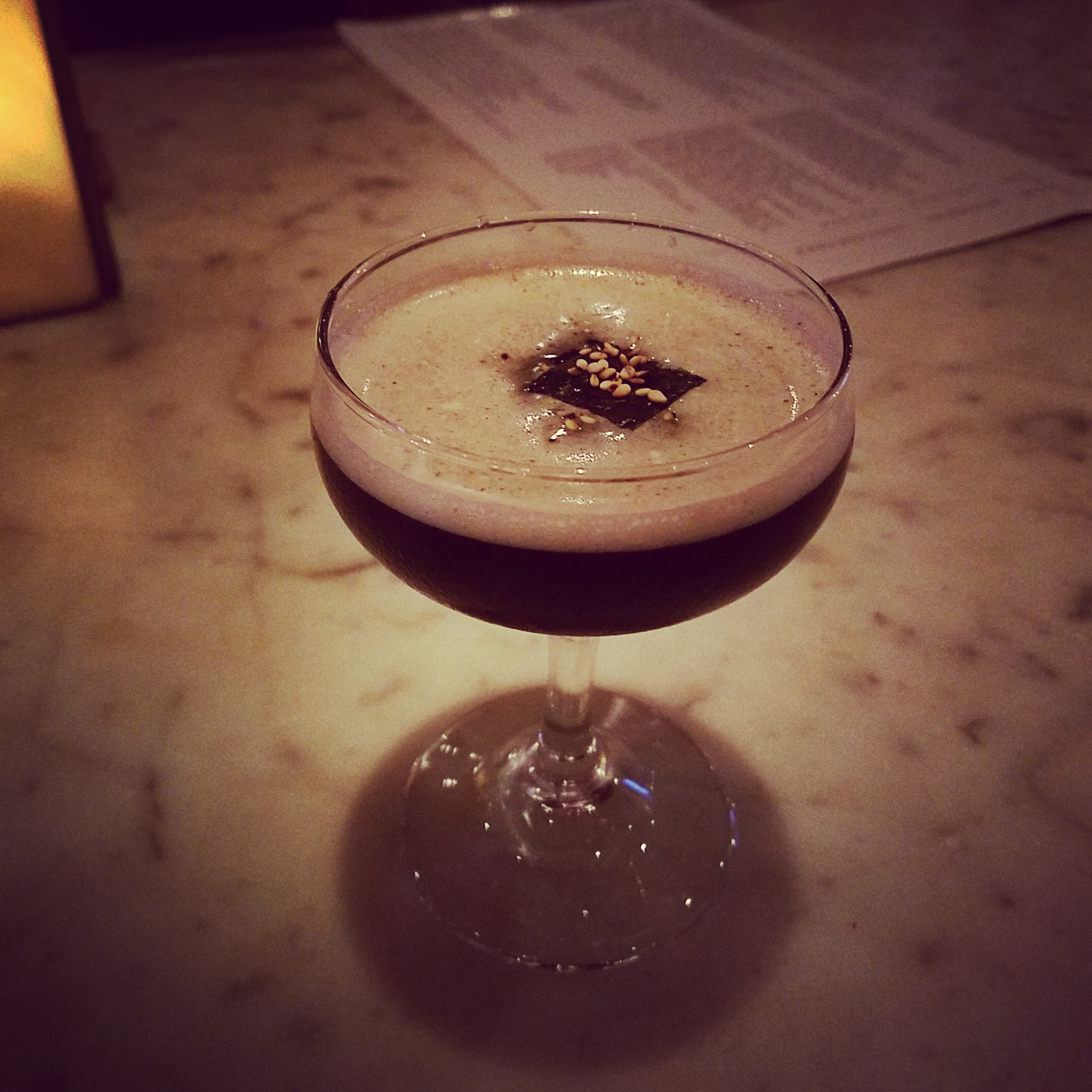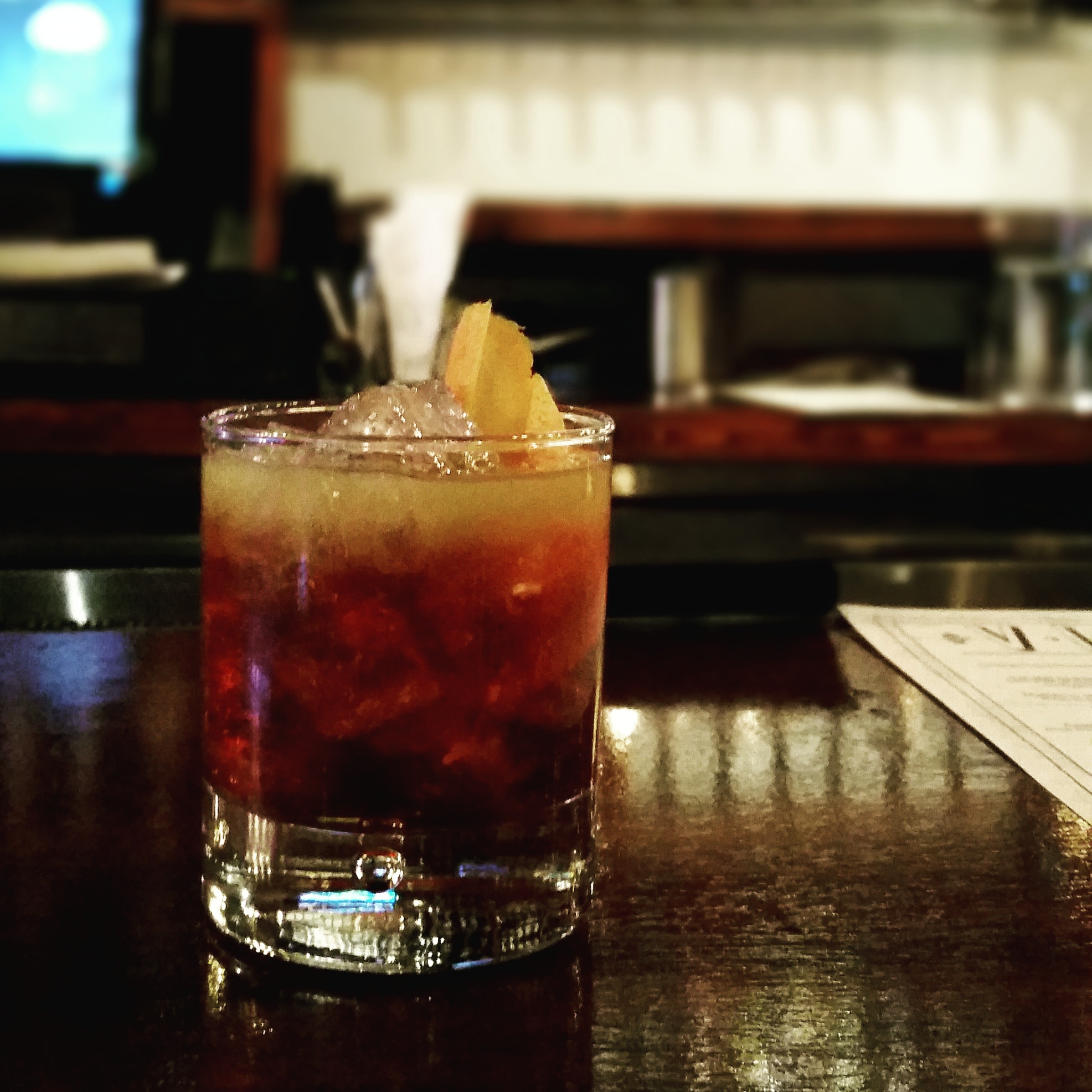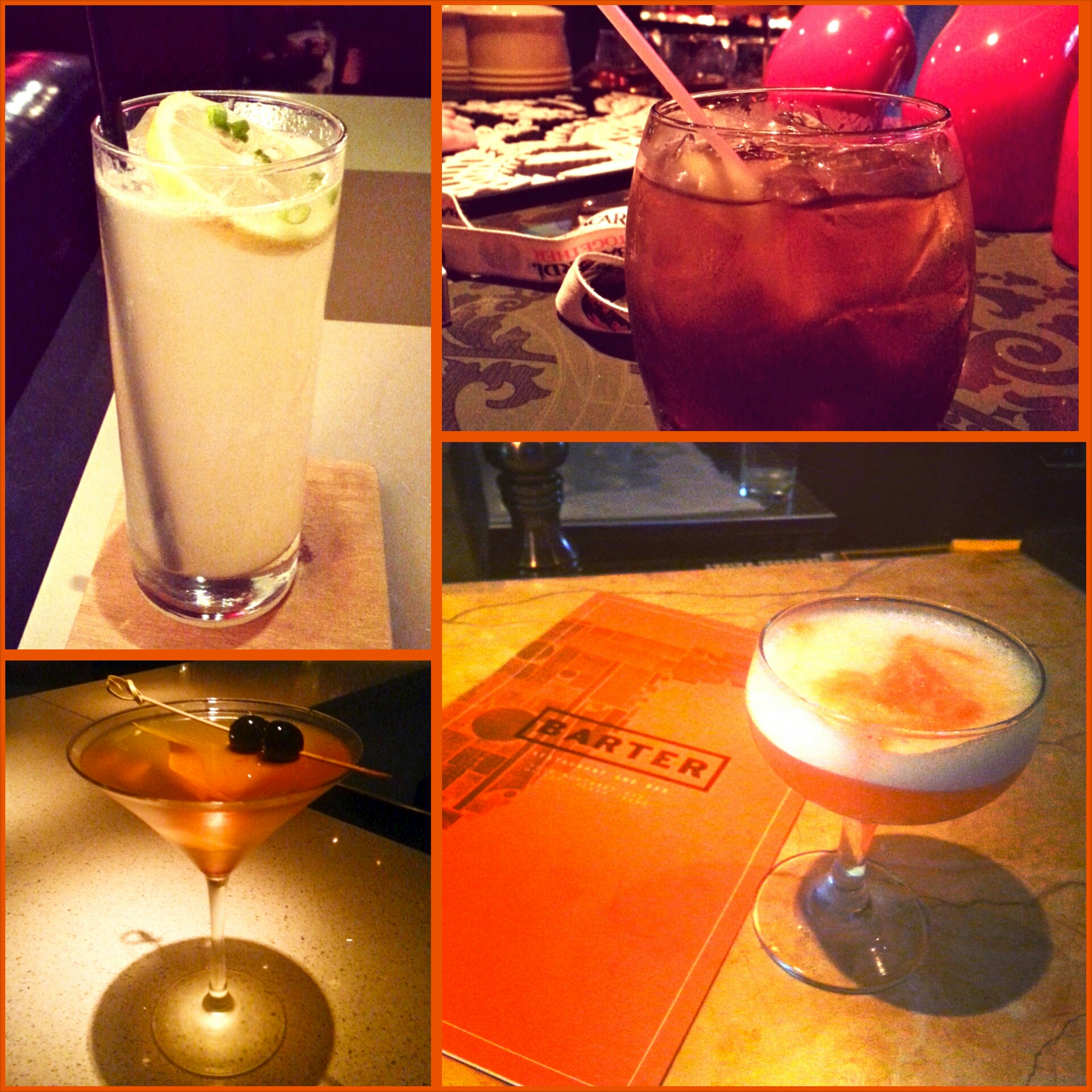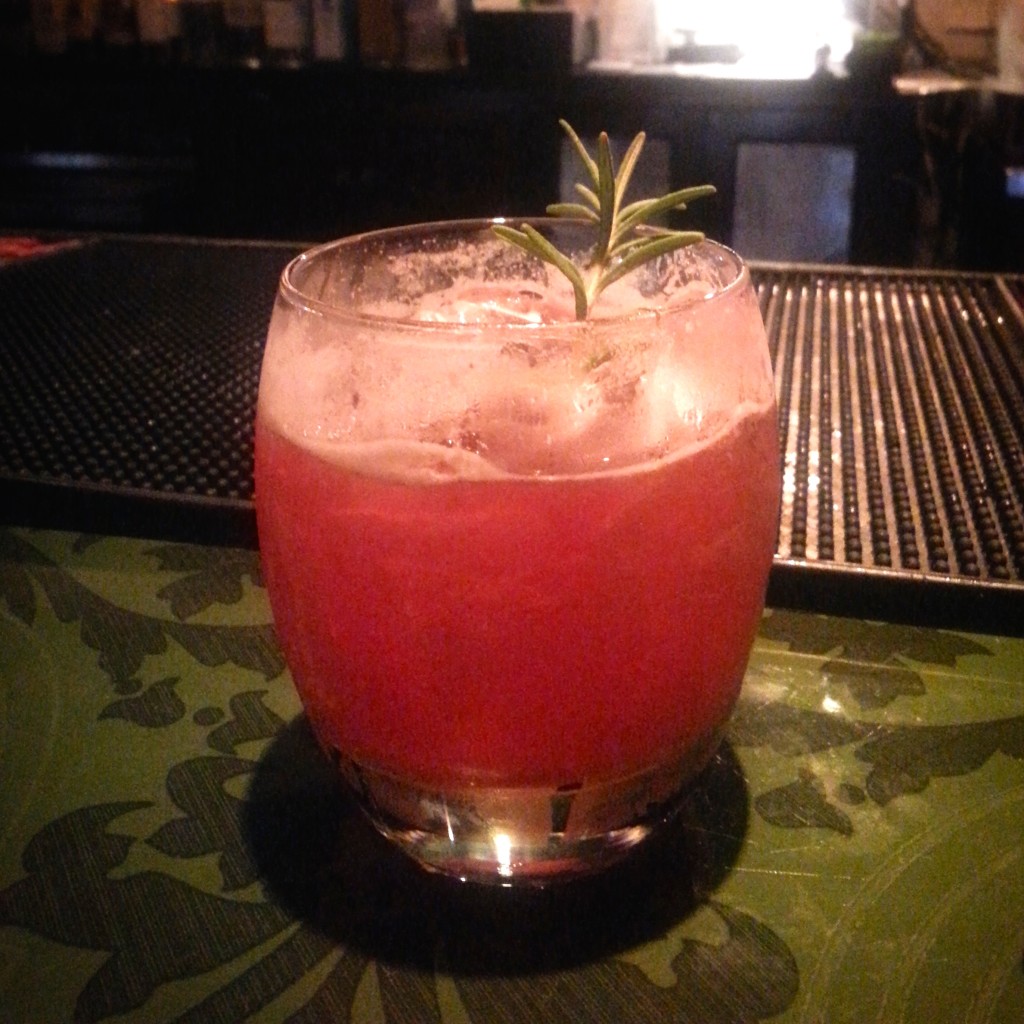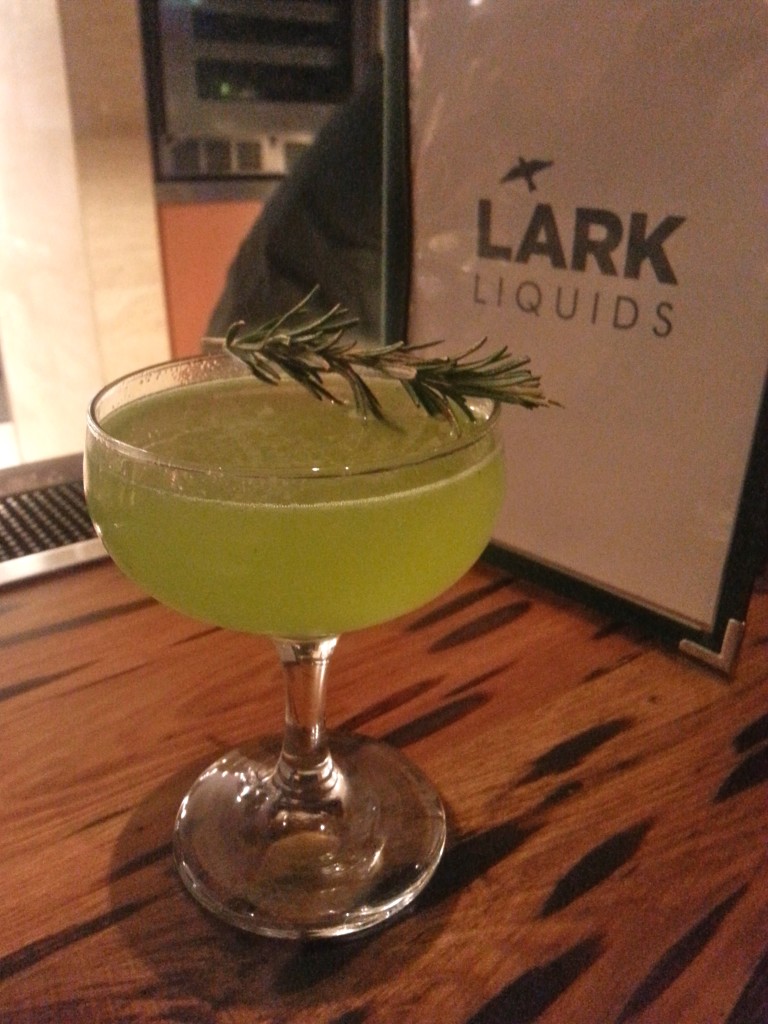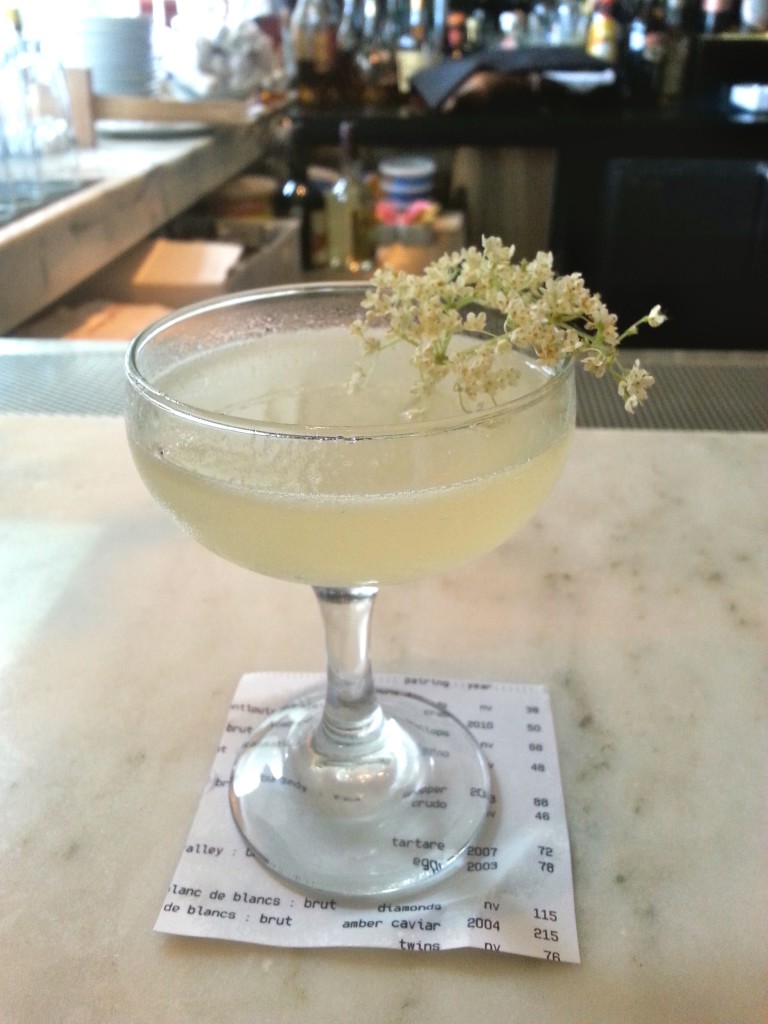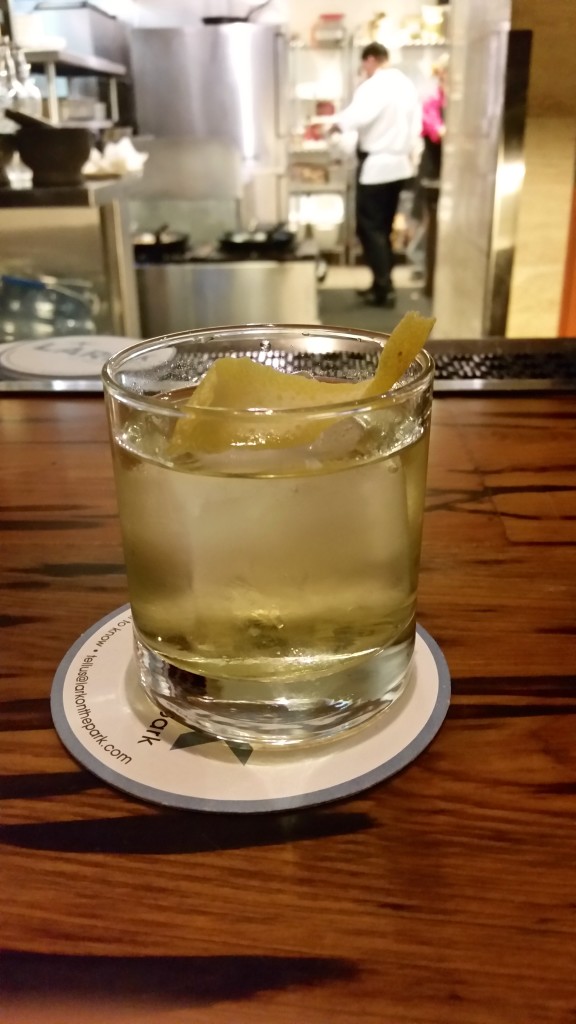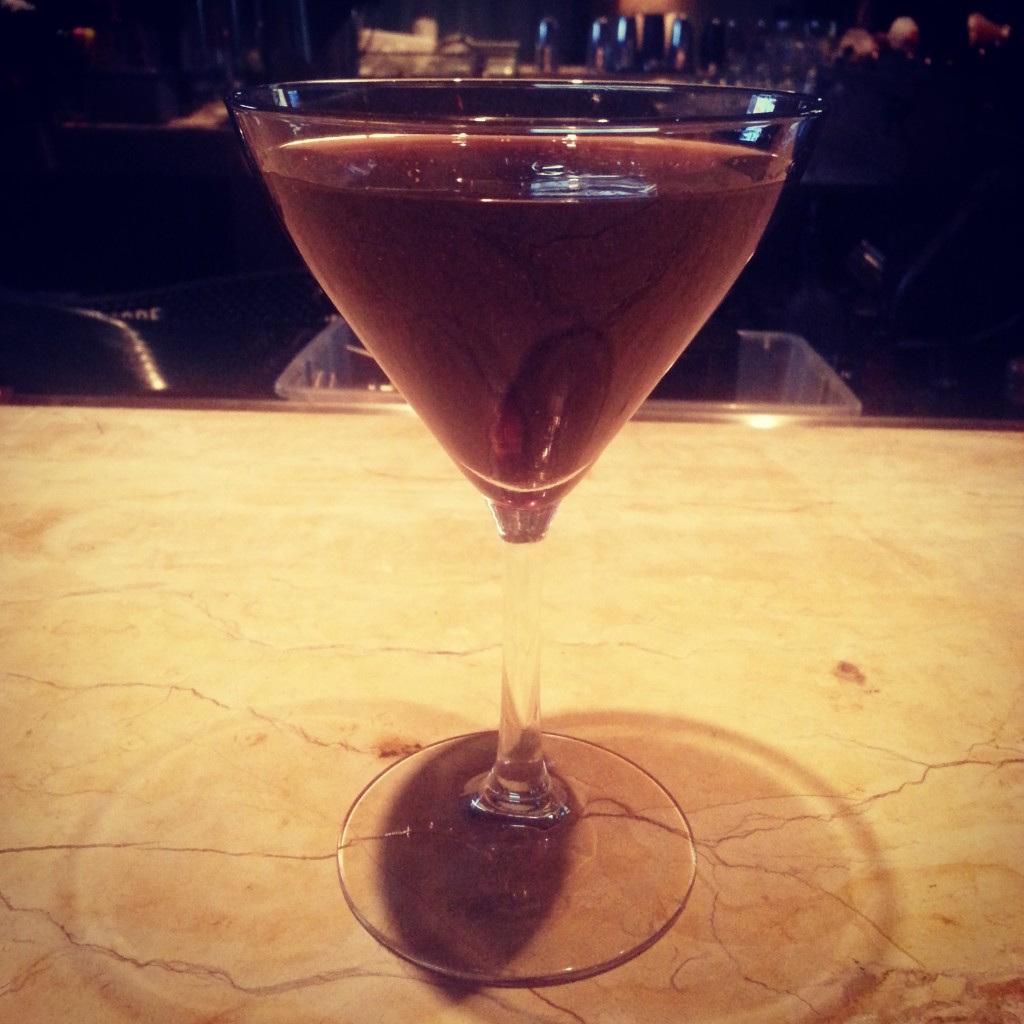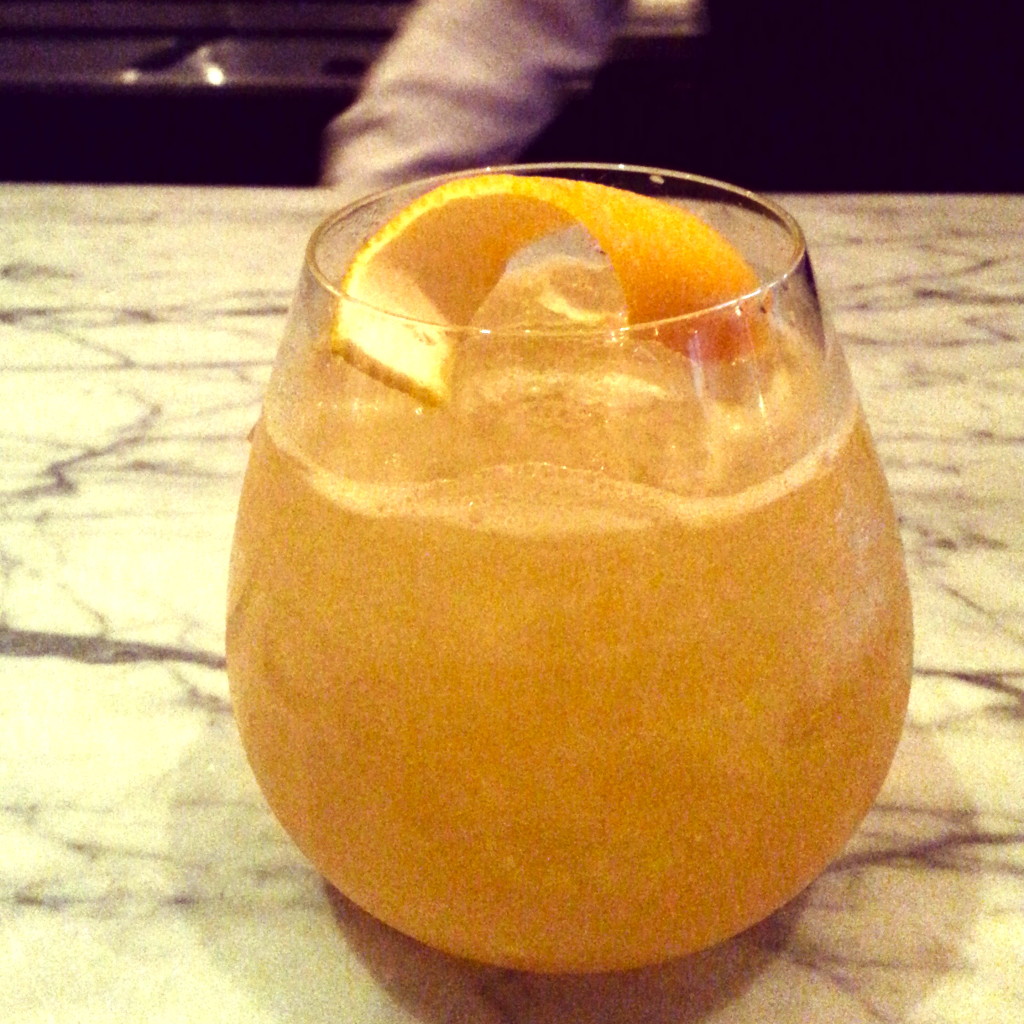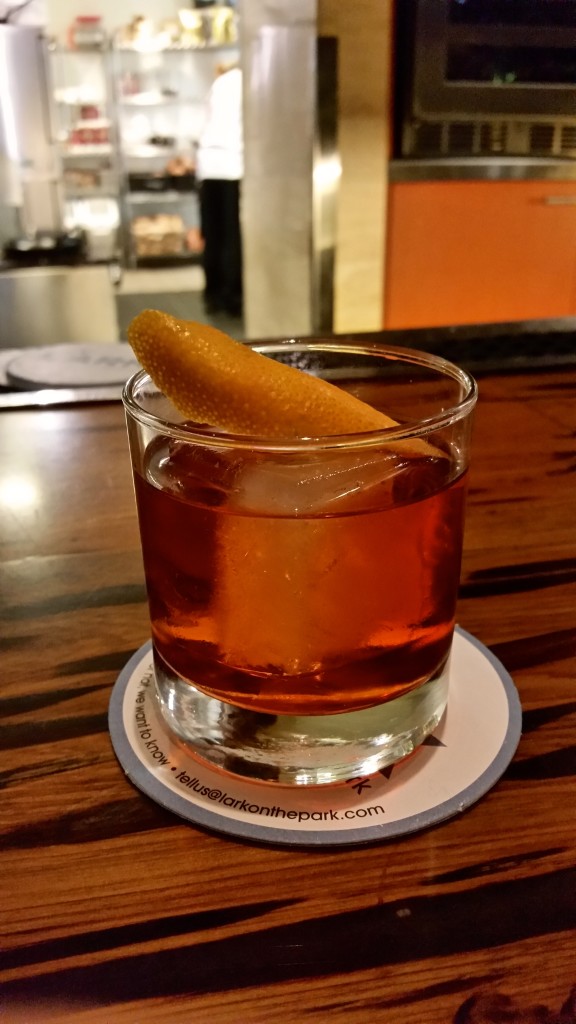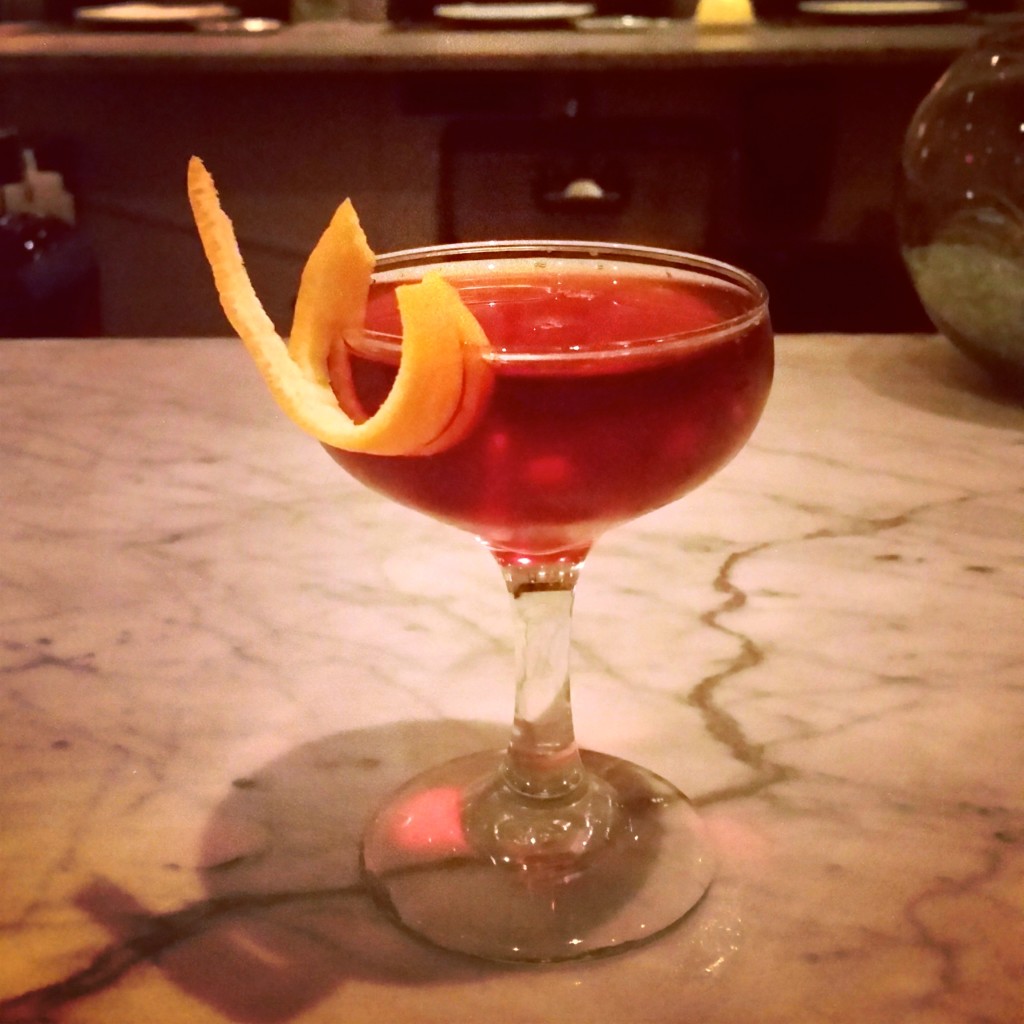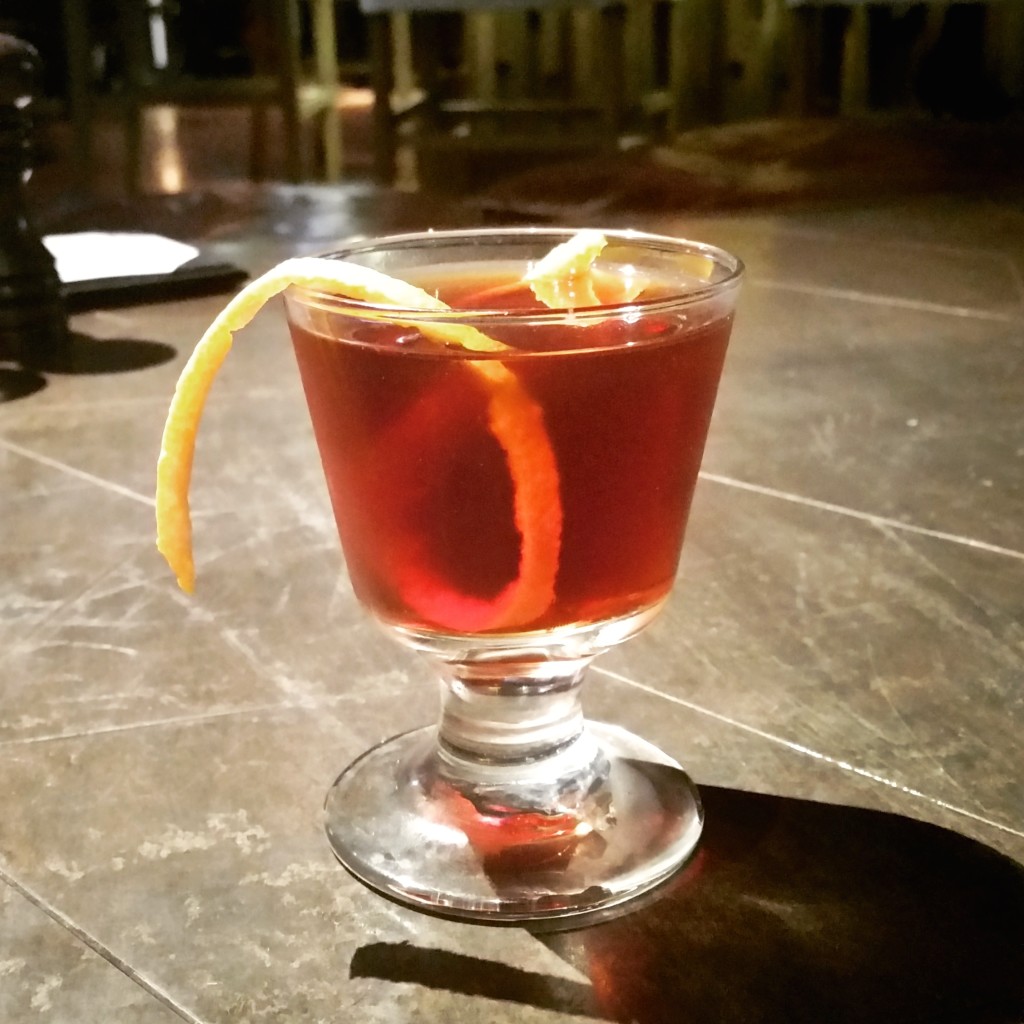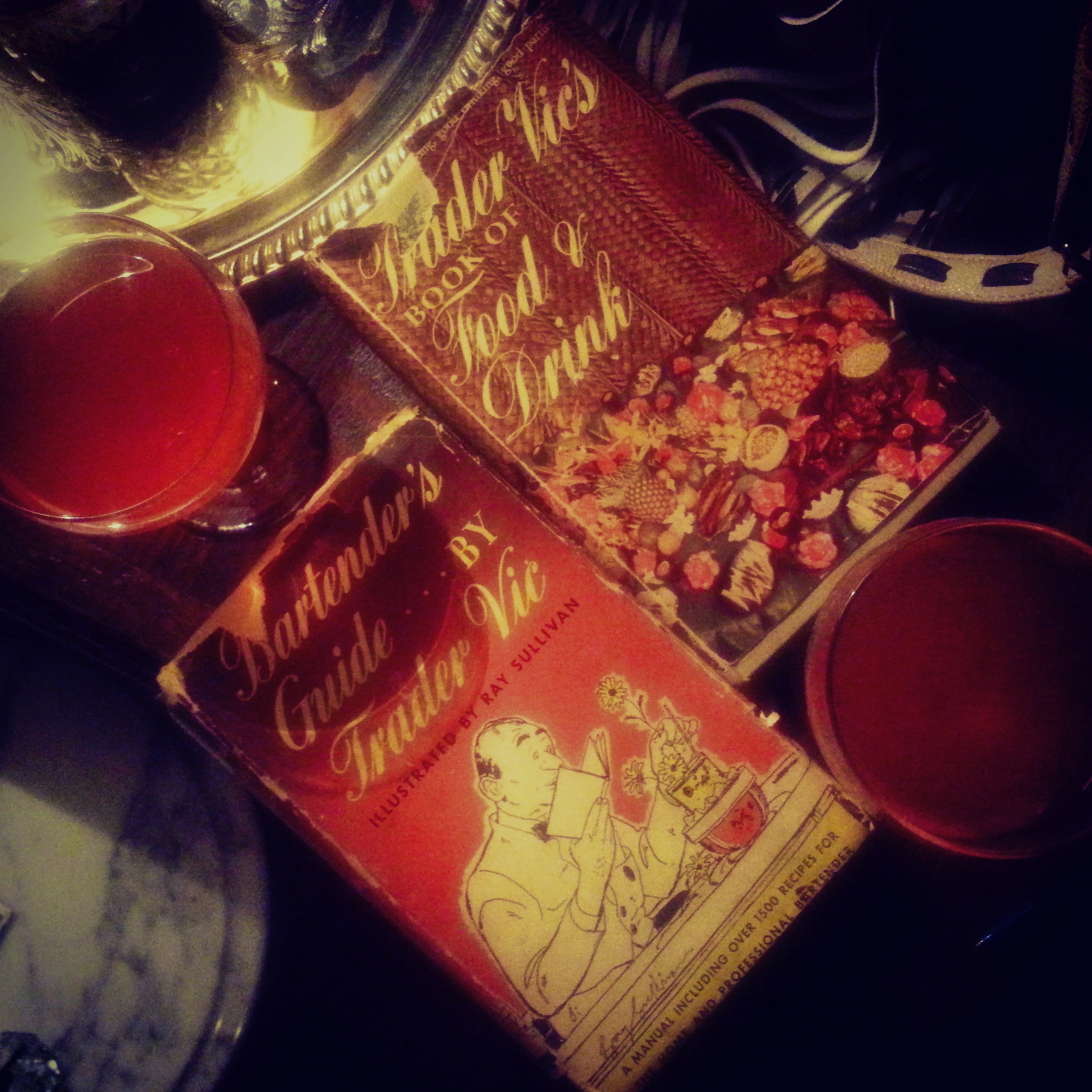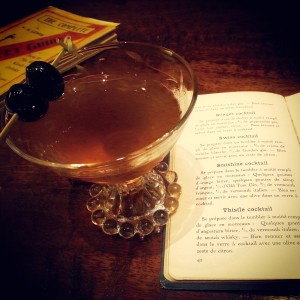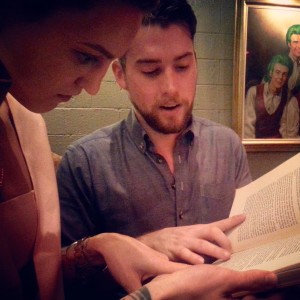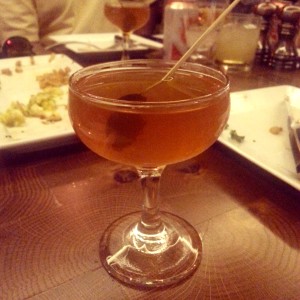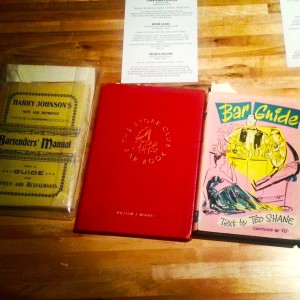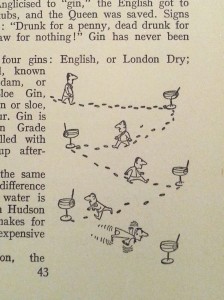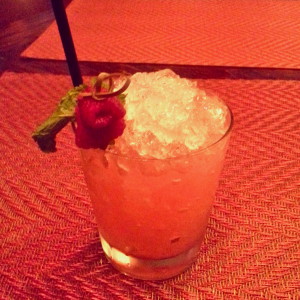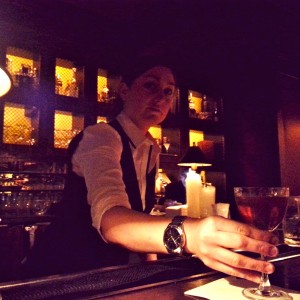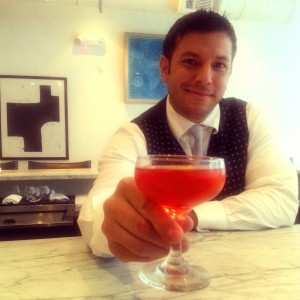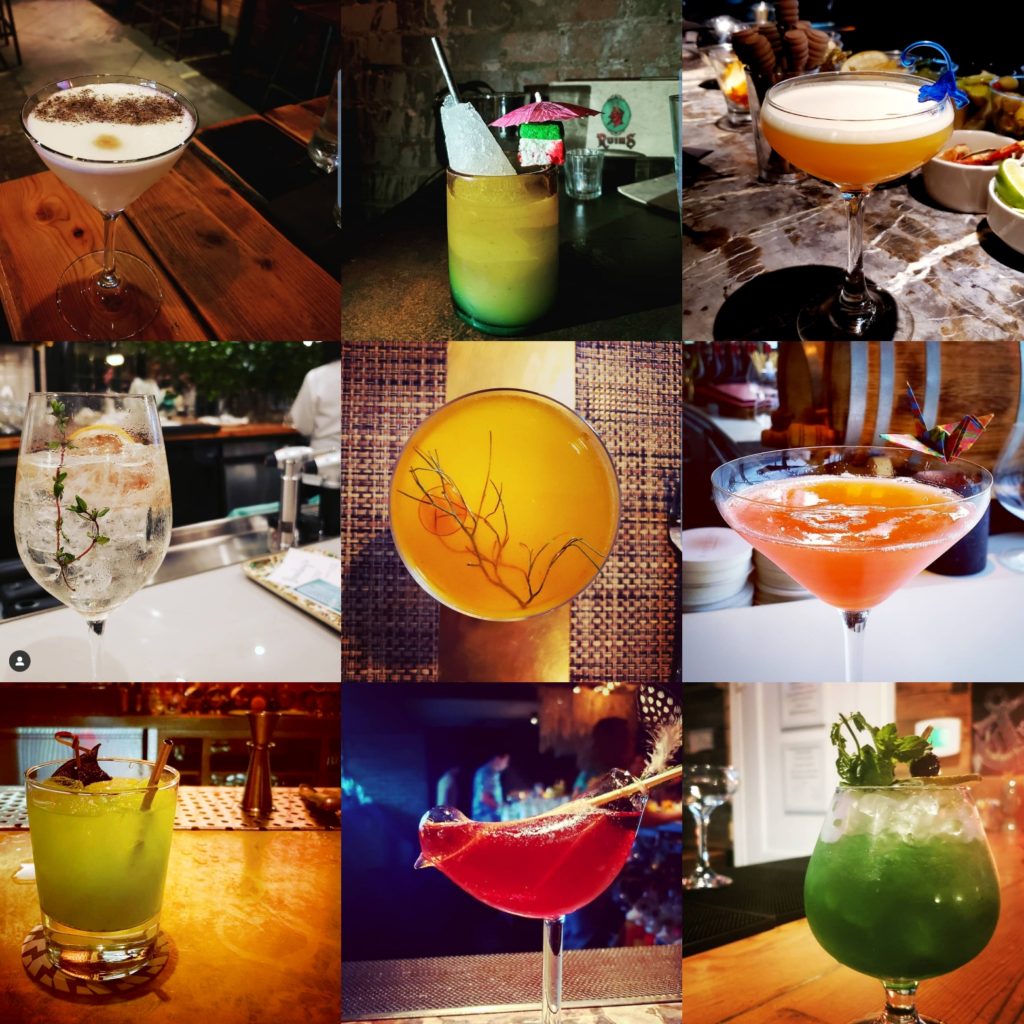
DFW, you finally bested me. There was no way to keep up with the flurry of craft cocktails springing forth from the minds of the metropolis’ mix masters in 2019, with newcomers like Deep Ellum’s Ebb & Flow, Las Palmas in Uptown, downtown’s Te Deseo and The Charles in the Design District padding the bounty.
On Fitzhugh, La Viuda Negra executed a Thor-like landing with its urban-Mexico-inspired vibe and a lineup of smartly conceived drinks both agave-centric and photogenic, while Eddie Campbell’s Clover Club debuted with swanky swagger above Cedar Springs in Uptown.
There was seemingly little left under the sun to drive innovation, but surprises flourished nonetheless: At Bourbon and Banter, Hugo Osorio’s Ducktail softened Scotch with sweet citrus while his Liberty Spikes fluttered with coyly bittersweet flavor; both (see photo above) were among my favorite drinks of the year.
At Proper in Fort Worth, so was Lisa Adams’ Pandan Swizzle, which blended the nuttiness of amontillado sherry with the sweetness of its lovely signature herb. At Five Sixty, the always-crafty James Slater also employed pandan in his Paper Crane, a smooth twist on the classic Paper Plane, while Midnight Rambler’s Chad Solomon medicated his absinthe-laden Seasick Crocodile with poblano juice and Thai chile.
At Homewood on Oak Lawn, golden beet and orange leapt like dolphins across an sea of gin in Lauren Festa’s Golden Amaranth, while in Plano, there was definitely Something About Rosemary in Whiskey Cake’s nicely balanced drink of the same name. The Spanish Gin & Tonic at Beverley’s was nothing less than sublime, while in Knox-Henderson, Alex Fletcher’s Inca Knife Fight conquered my palate with coconut Pisco Sour flair.
Rounding out my year’s faves: At Ruins in Deep Ellum, Peter Novotny’s impressive Sierra Outkast — a nod to tiki’s Navy Grog — blended Oaxacan gin and rum with Swedish aquavit and garnished it with tri-color coconut candy. Meanwhile, La Viuda Negra made Mexican magic with the dazzling Purple Drink, featuring Michoacan rum and butterfly pea flower, and the terrific, raicilla-based El Papazote.
The decade saw craft cocktails grow from infancy to maturity in D-FW, led by The Usual in Fort Worth (which just marked its 10th anniversary) and then scattered, early Dallas pioneers like The Cedars Social, Victor Tangos, Bolsa, Private/Social, Windmill Lounge, Black Swan Saloon and The People’s Last Stand, along with Whiskey Cake in Plano. As our palates grew more discerning and adventurous, the quality and quantity of spirits, liqueurs and exotic ingredients grew to meet the demand. And as momentum slowed as talent scattered and pioneering bars fell by the wayside, top-notch newcomers rose up to create new energy, such as Las Almas Rotas in Fair Park; Jettison in West Dallas; Hide, Shoals Sound & Service and Ruins in Deep Ellum.
Bartenders crafted ingredients using chef-driven methods like sous vide and molecular gastronomy; others introduced us to Japanese shochu and sake, Spanish sherries and Mexico’s broad palette of agave-based spirits; we saw cocktails garnished with seaweed and tongue-numbing buzz button; we nibbled on roasted grasshoppers while sipping mezcal.
The community itself became a force, too: We saw the local bar and spirits industry come together to raise thousands of dollars for tornado and hurricane relief, for hospitalized kids and for the medical expenses of those in their own bar community family. In 2018, the scene collectively grieved the loss of three beloved barmen, Armoury’s Chad Yarbrough, Ian Brooks of Brick and Bones and Josh Meeks of Henry’s Majestic. And we saw the industry’s women in DFW become a force for change and advancement, with efforts such as The Shake Up, an all-female competition now in its second year raising money for women’s charities.
You’ve come a long way, DFW. Likewise, my tastes have changed, and over time I grew to appreciate drinks I hadn’t ranked so highly in the past or to reconsider others that I had. Looking back, about 40 of them stood out for their creativity, innovation, timeworn allure, and/or that one ingredient I couldn’t stop thinking about. In the spirit of the New Year, here, in alphabetical order, are my favorite 20 DFW cocktails of the last decade.
ALPINE BLUES – Scott Jenkins, Hide (2018)
Bolivian brandy, amaro, quinquina, walnut liqueur, clarified lemon

Jenkins, resident mixmaster at Deep Ellum’s Hide, killed it in 2018 with his Oaxacan Shaman, a masterful mezcal-aguardiente mashup, and his lusciously butternutty Quest for the Sun, a sunflower-seed-infused vodka vehicle. But my favorite of all was his Alpine Blues: A whirlwind trip to the mountains had filled him with memories of brisk, chilly air and damp ground covered in foliage. Those longings inspired this reflection of nature’s growth: Nux walnut liqueur, he said, formed the base soil, deep and rich with decomposing nettles; blueberry-influenced Pasubio, an alpine bitter liqueur, was the surface – “earthy and fruity; there’s still some life in it;” Cap Corse, a quinine aperitif, and clarified lemon juice represented new growth, with the bitter citrus of biting into a young stem; Singani 63, a botanical Bolivian brandy, was the blossom. “There were specific slopes and colors in my mind,” he says. “It made me have the blues not to be there.”
AUTUMN IN BRAZIL – Jason Pollard, The Usual (2018)
Aged cachaca, sherry, sweet vermouth, demerara syrup, saffron bitters
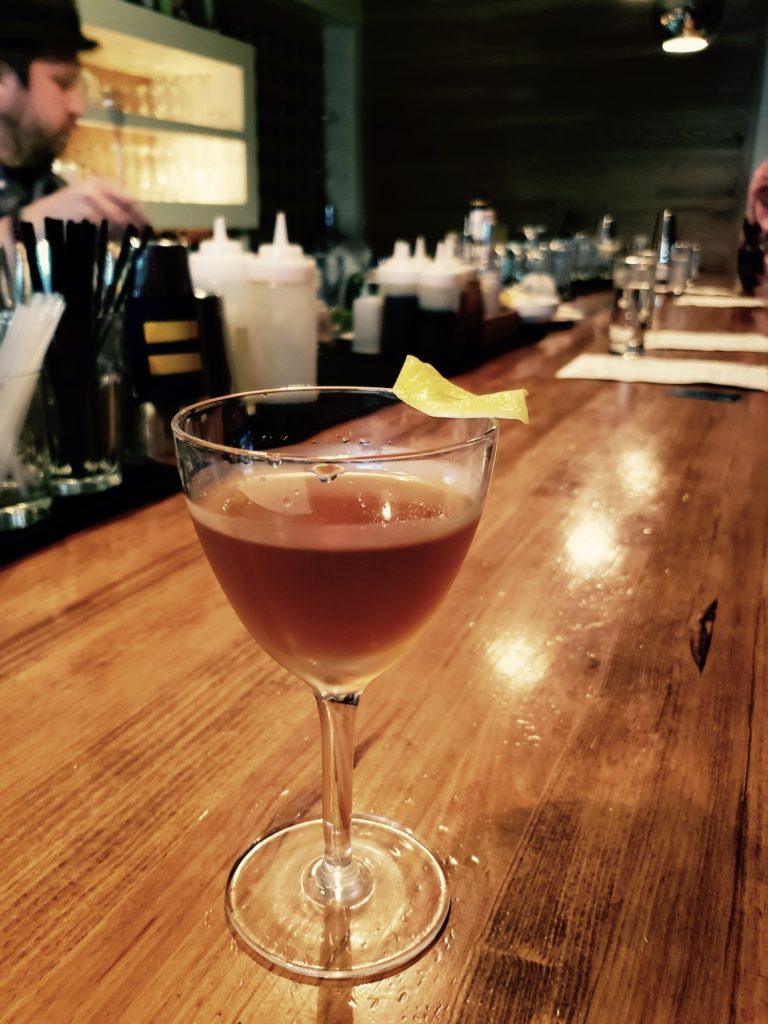
In 2016, Brazil’s national spirit enjoyed a brief moment in the D-FW sun, with drinks such as Spencer Shelton’s wonderful Rio Julep at Bolsa capitalizing on Amburana’s spiced banana bread notes. Two years later at The Usual, the Magnolia Avenue mainstay in Fort Worth, Pollard built on those caramel, vanilla flavors and added the rich nuttiness of sherry, then rounded it out with Cocchi di Torino sweet vermouth and caramel-esque demerara syrup. With hints of raisin, chocolate and cinnamon and the aroma of musky grapes, this was a sensational seasonal sipper.
BAD SEED – Omar YeeFoon, Bar Smyth (2013)
Aquavit, Italian bitter liqueur, egg white, lemon, root beer, toasted sesame seeds

By 2013, the scene had seen the rise of its first reservations-only cocktail den with Bar Smyth, which along withe People’s also featured one of the finest compilations of behind-the-bar talent ever seen in Dallas. There was no menu at this dimly lit, short-lived Knox-Henderson speakeasy, so maybe I actually waltzed in and asked YeeFoon, now co-owner of Shoals Sound & Service in Deep Ellum, to make something with aquavit, Scandinavia’s caraway-flavored liqueur. More likely it was something that YeeFoon just happened to be playing with that day. Whatever it was, this frothy number, employing Averna and an egg-white canvas, inspired lasting intrigue with its splash of sarsaparilla and a creative touch of soft sesame on the nose.
BLACK MONK – Creighten Brown, Barter (2014)
Aged Irish whiskey, Italian bitter liqueur, herbal honey liqueur, sarsaparilla bitters

Planted at the bar of this redo of Uptown’s pioneering Private/Social, I pretty much went bonkers trying to decipher the Black Monk’s enigmatic flavor. The smoky-flavored drink was tricky to pin down, greater than the sum of its parts: Brown blended Jameson Black Barrel Reserve Irish Whiskey, bittersweet Averna, the honey-ish Benedictine and a bit of rye-and-sarsaparilla-flavored basement bitters with a tincture made with tonka bean, vanilla bean and lemongrass. Every time I tried it, shoe leather images popped into my head, but in a most comforting way: The notes shuffing across my tongue included molasses, root beer, pecan pie, cooked honey, even smoky flan. The Black Monk was not for everyone – but for those who enjoy a good cigar, this one was a triumph.
BUZZ-CAT – staff at Boulevardier (2015)
Old Tom gin, Earl Grey tea-infused honey syrup, apple bitters, lemon, ginger, baked apple garnish

The craft-cocktail renaissance inspired a resurgence of classic spirits, among them Old Tom gin, the spirit’s 18th-century, slightly sweeter cousin. My favorite is the barrel-aged Tom Cat, made by Vermont’s Barr Hill, a former bee farm that infuses its spirits with a signature honey flavor. Tom Cat also happens to be sold in distinctive, small bottles that were just the size that bar manager Eddie Eakin of Bishop Arts’ Boulevardier wanted for his syrups and juices. He ordered a batch of Tom Cat for his bartenders, who began subbing it for standard gin in the Steep Buzz, a celebrated cocktail Eakin had devised in 2013. With a baked apple slice garnish, the Buzz-Cat was a honey-perfect blend of autumny, apple-pie aroma, herbal Tom Cat spice and lingering lemon-ginger bite. “We were just trying to pour through it,” bartender Ashley Williams said. “And it just caught on.”
DAMNED AND DETERMINED – Brad Bowden, Parliament (2014)
Rum, Green Chartreuse, ancho chile liqueur, egg white, pineapple-vanilla syrup, Angostura bitters
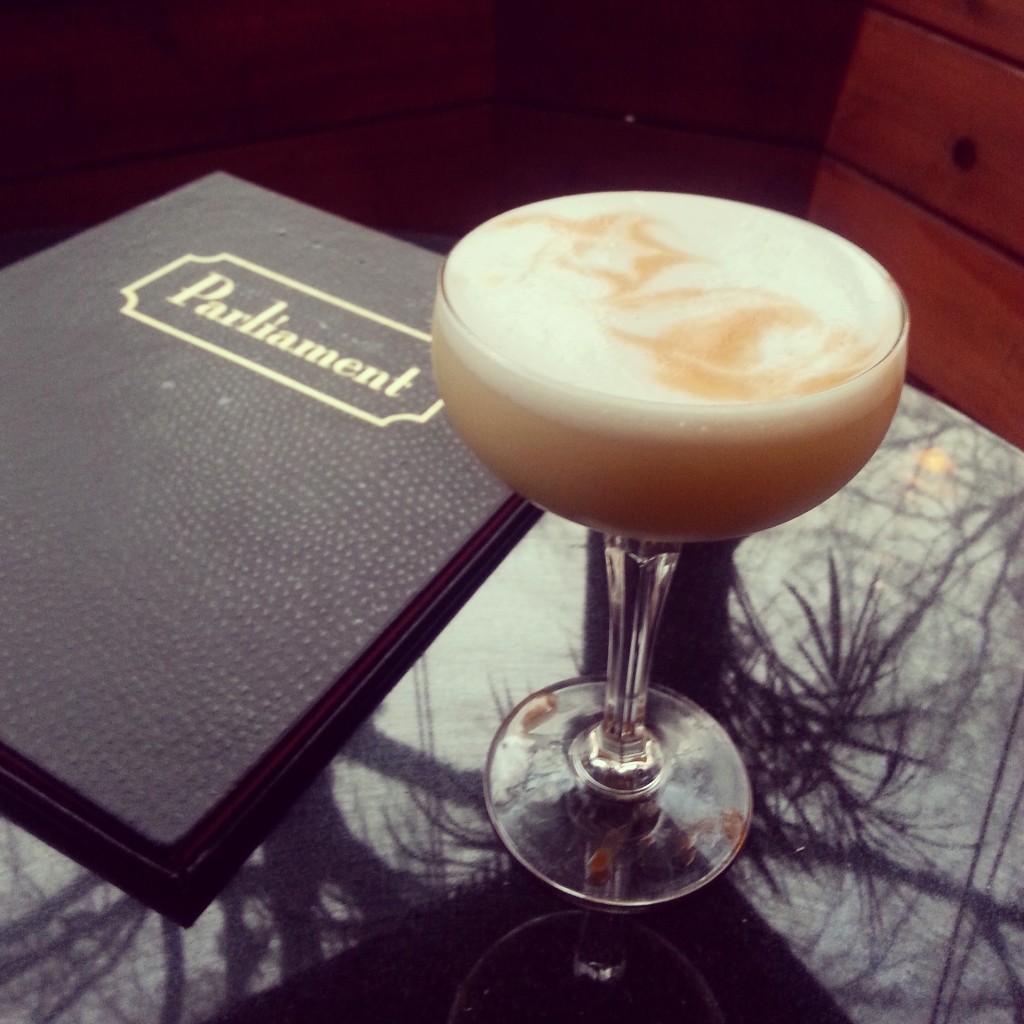
Bowden, who you’ll find these days at East Dallas’ Lounge Here, didn’t care much for Ancho Reyes, the ancho-chile-flavored liqueur that became my crush of 2014, following in the footsteps of botanical Hum and bitter Suze. But when the slightly spicy, vanilla-tinged blend started earning national recognition, Bowden — then at Uptown’s Parliament — said he felt “damned and determined” to do something with it. Ancho’s bite made it a natural fit for tequila or mezcal, “but that’s what everyone else was doing,” he says (accurately). Instead, he took rum, his preferred spirit, and devised what’s essentially a tiki drink, adding sweetly vegetal Green Chartreuse to Papa’s Pilar blonde – “Rum and Green Chartreuse go together like nobody’s business,” he says – along with egg white and a tropical pineapple-vanilla syrup. The egg white gives the ancho a soft bed to lie on; the syrup binds it all together. A last flourish of Angostura bitters atop makes it a magic carpet ride, frothy and floral with a sweet and spicy descent.
DOUBLE UNDER – Emily Arseneau, H&G Sply (2013)
Beet-infused tequila, triple sec, citrus, rosemary syrup, salt
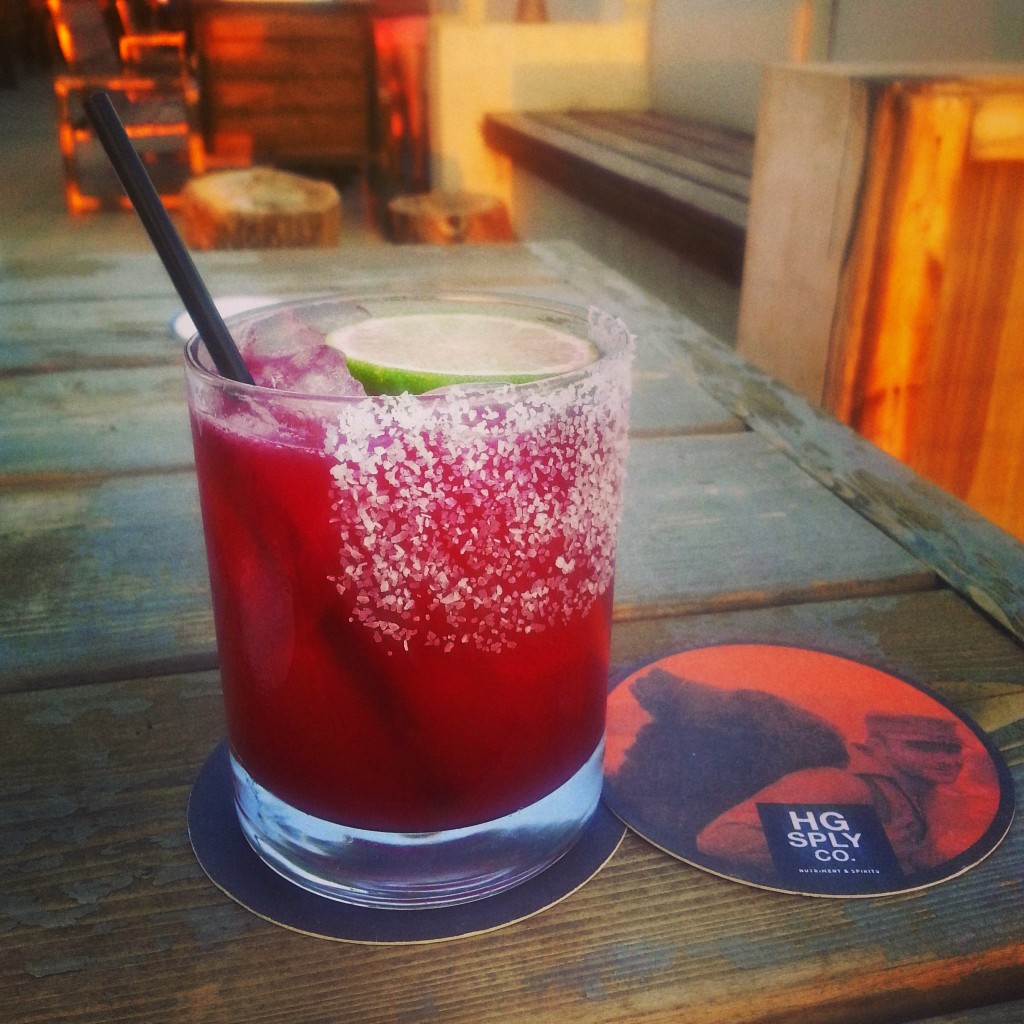
Who doesn’t love beets? Okay, a lot of people doesn’t love beets. But properly speaking, for those of us who do, this radiant refresher ably answers the call – a simple mix of lively beet-infused tequila, lime and rosemary syrup. Arseneau – now with liquor giant Remy Cointreau – modified this creation by Portland’s Jacob Wallace for the drink list at Lower Greenville’s H&G Sply, toying with the proportions and adding Cointreau; “it’s supposed to be an earthier Margarita that never feels out of season,” she says. The taste is sour beet moxie and tangy lime, with a slight hint of herb. Unabashedly red with a flirty half-skirt of glittery salt, it was a stunner to look at, too.
EL PAPAZOTE – Saul Avila Hernandez, La Viuda Negra (2019)
Raicilla, lime, sherry, epazote syrup
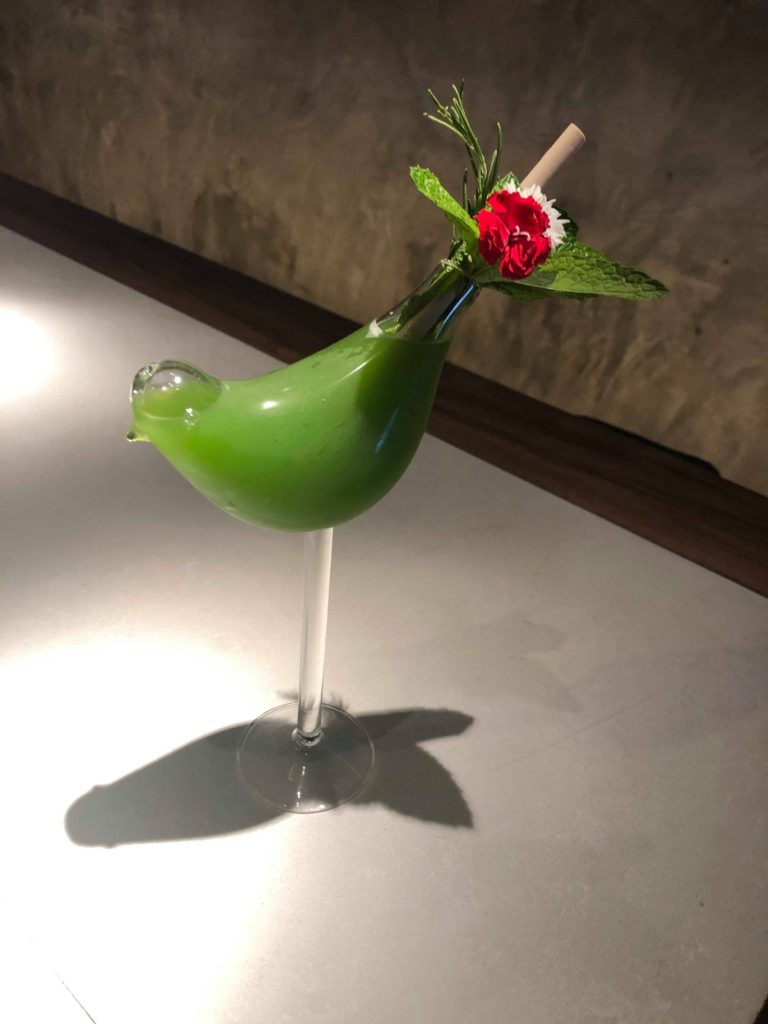
Brothers Javier and Luis Villalva’s La Viuda Negra (“The Black Widow”) on Fitzhugh was my favorite addition to the scene in 2019, with a modern rustic interior and delicious cocktails both inventive and sometimes whimsically presented. My favorite of the bunch was El Papazote, which achieved magnificence with its crafty use of funky raicilla, an agave-based spirit still uncommon beyond its native state of Jalisco. Avila gave La Venenosa’s Costa de Jalisco the sweet-and-sour treatment with lime, a dash of sherry and a syrup made with epazote, a leafy herb found in southern Mexico that accents the raicilla’s fruity-floral earthiness.
FLEUR DE FEU – Austin Millspaugh, The Standard Pour (2017)
Elderflower liqueur, green chile liqueur, Angostura bitters, cream
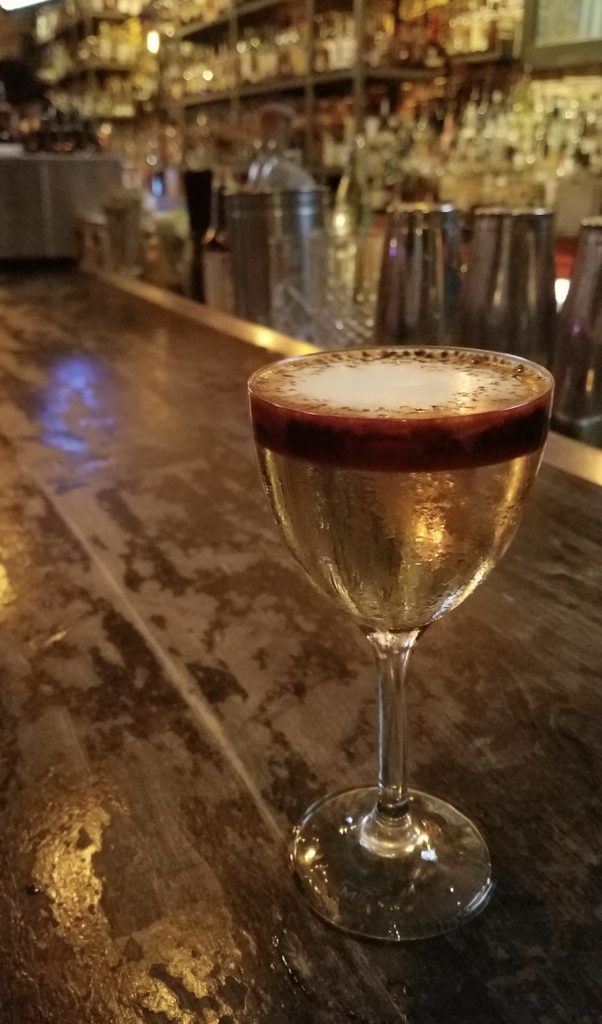
At Uptown’s Standard Pour, this creamy off-menu creation, with a name meaning “flower of fire,” was a low-proof treat, a deceptively sweet drink that actually leaned savory. Millspaugh, whose penchant for cocktail alchemy had previously produced a nifty Cognac spin on the classic gin Bijou, was once again inspired: He mixed St. Germain and Ancho Reyes liqueurs with Angostura bitters and poured them into a nifty Nick and Nora glass, then topped it all with a thin layer of cream that he torched it for a burnt marshmallow effect. The result unveiled a stunning contrast between the foamy top and wine-clear body below; the creamy fats lent texture and depth to a bouquet of floral and spicy flavors with smoky overtones. “You think it’s going to be sweet, but your notions are debunked the second you sip it,” he said.
MADAME HUMMINGBIRD – Lauren Festa, Flora Street Cafe (2016)
Vodka, botanical liqueur, honey-piquillo syrup
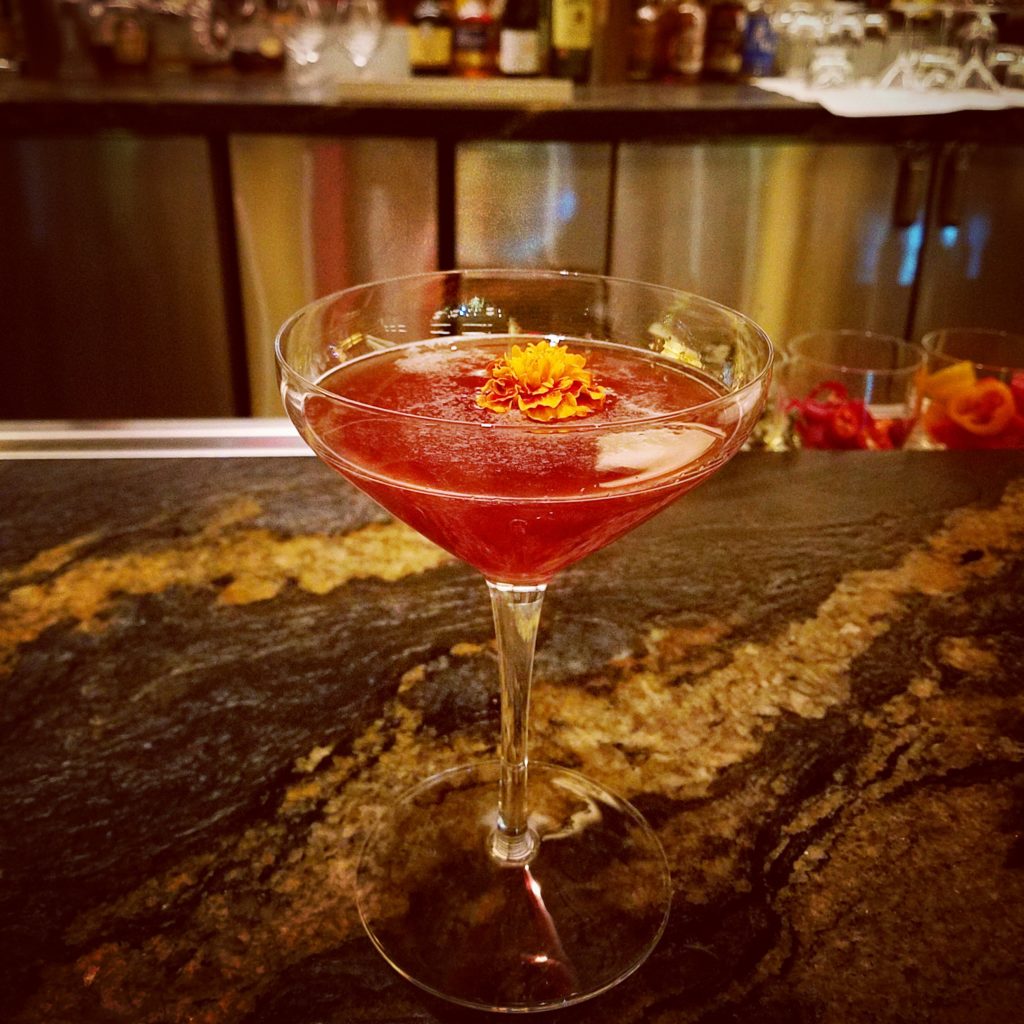
Way back when Rocco Milano helmed the bar at Private/Social, may it rest in peace, he introduced me to Hum, a remarkably profuse hibiscus cordial offering notes of cardamom, clove, ginger and kaffir lime. A love affair was born; I couldn’t get enough of the stuff, and though the fling ran its course, it was always good to see an old flame. At Stephan Pyles’ then-newly opened (and now newly closed) downtown restaurant, that’s how Festa –now at Homewood — lured me in; her flower-garnished cocktail let sturdy Absolut Elyx act as handler, reining in Hum’s exuberance, but the real dash of brilliance was a chili syrup that added a tantalizing jolt of heat. “Hum and heat go well together,” she said. “It brings out the spices.”
MALTA – James Slater, Network Bar (2017)
Italian bitter liqueur, French bitter ginger liqueur, turbinado sugar syrup, blackberries
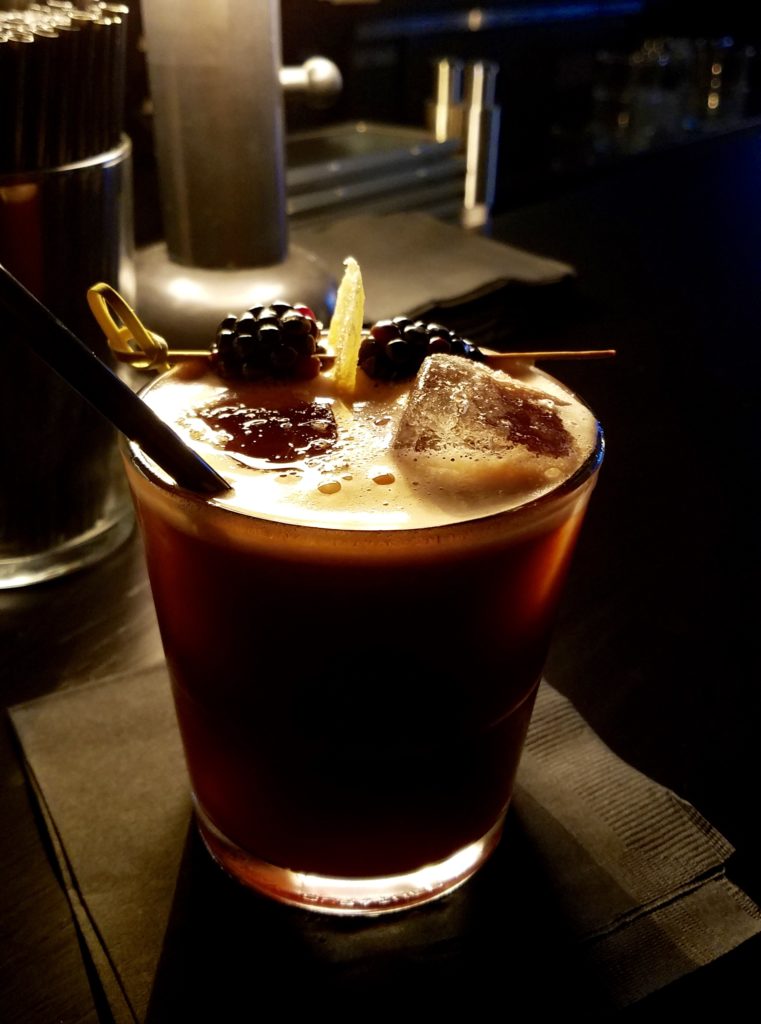
Several years earlier, when Slater (now at Five Sixty) helmed the bar at now-defunct Spoon, he wowed with an off-the-cuff, darkly bittersweet Fernet-based creation he ultimately called Blue Moon, and he’s been riffing on it ever since. During a brief stint as bar director for the members-only club at Trinity Groves, his newest spin on the drink was a winner: Still mining the bitter mint depths of Fernet, it subbed blackberries for blue and ginger-forward Amer Gingembre for less aggressive Averna. The lush Gingembre tamed the harshness of its predecessor; think of the Malta as a boozy berry detox juice with a dollop of licorice-like sweetness.
MANGO LASSIE – Jesse Powell, Parliament (2018)
Guyanese aged rum, citrus, mango, yogurt, honey, tajin
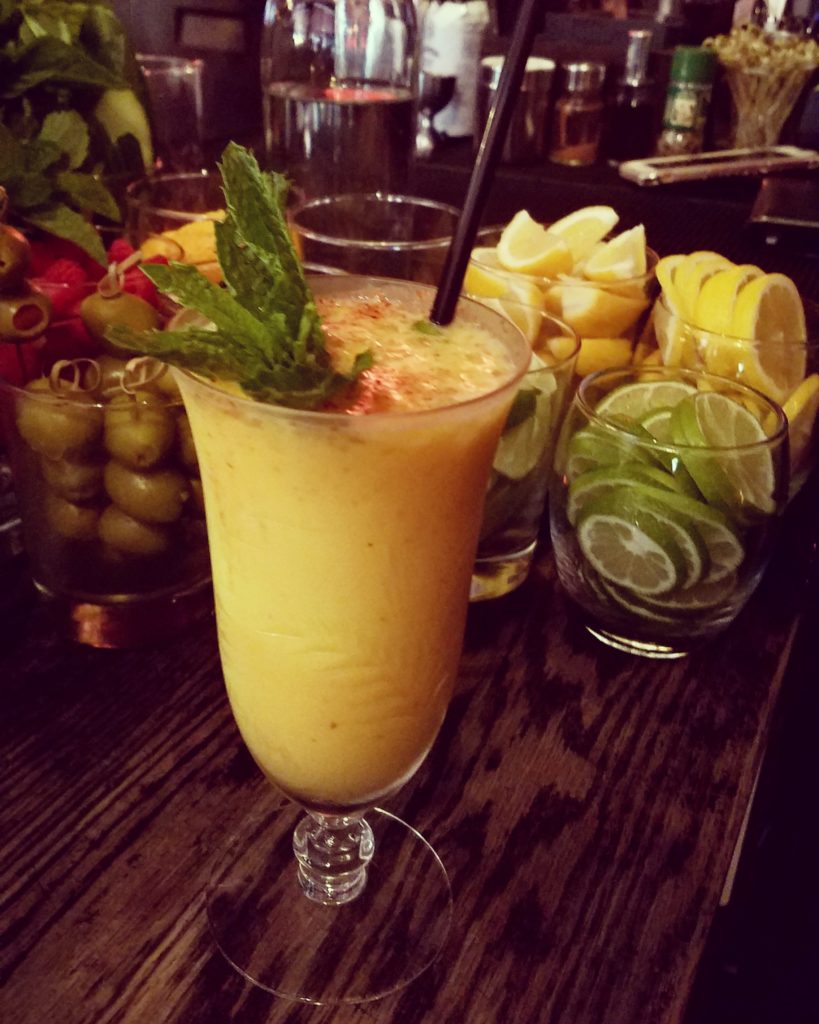
During a trip to Chicago’s Pub Royale, an Anglo-Indian-style tavern, in early 2018, Powell — now a local gin and tequila ambassador– discovered the joys of the mango lassi, India’s traditional mango milkshake. Naturally, as he savored its mix of yogurt, mango, milk and sugar, he wondered: How can I translate this into a cocktail? He came through like a champ, structuring the beverage’s viscous, sour-sweet depths atop a foundation of El Dorado 5-year, then garnishing the Creamsicle-orange drink with cool mint and a clever rim of Mexican tajin, the chili powder that often graces that country’s mango street snacks. Poured over crushed ice, it was a tasty summer refresher I still found myself craving in the cold of winter.
MEZCAL SAZERAC – Hugo Osorio, The Theodore (2017)
Mezcal, tawny port, Peychaud’s bitters, tiki bitters, absinthe
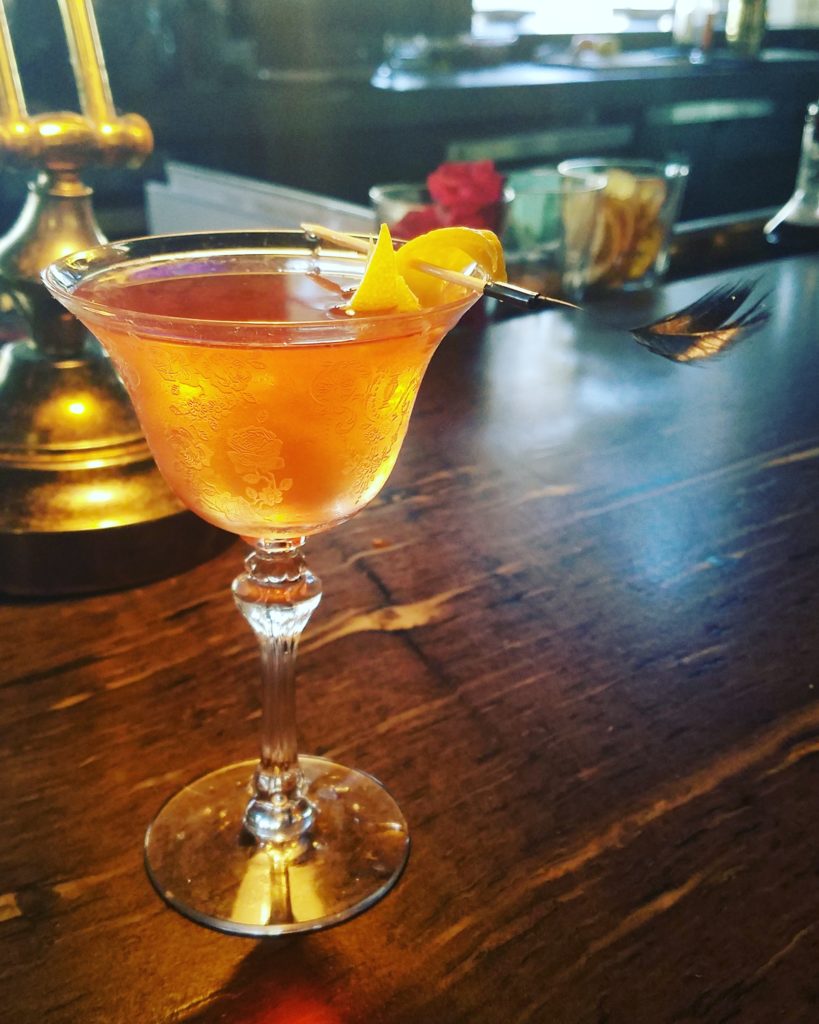
It was actually bartender Sam Gillespie, then of The Mitchell in downtown Dallas, who introduced me in late 2017 to the notion of a Sazerac built on smoky mezcal rather than the classic rye or cognac. His simple switch of spirit was solid and satisfying — but then, the very next day, I dropped by the Theodore, the former NorthPark Center lair where barman Hugo Osorio was unspooling impressive off-menu creations in his spare time. When I asked what he was working on, he replied: “How about a mezcal Sazerac?” Osorio made the drink his own by adding the wintry cinnamon spice of tiki bitters and replacing sugar with a bit of sweet tawny port, serving up a spectacular cold-weather sipper.
ONE MILLION IN UNMARKED BILLS — Pam Moncrief, The Usual (2014)
Old Tom gin, Hungarian bitter liqueur, dry vermouth, herbal honey liqueur, lemon oils

In 2014, I was deep into herbal liqueur exploration, curious to see what bartenders were doing with amaro and other European-based bottlings. One evening at The Usual, Moncrief , who now runs a cocktail pop-up business in Fort Worth, had been experimenting with a blend of Ransom Old Tom gin, herbal Zwack liqueur, Dolin Blanc vermouth and Benedictine, creating a gentle, well-rounded drink with spicy depths. Floral and grape gave way to a honey-bitter finish with a tang that lingered like nightclub ear, with a dose of lemon oils atop adding a nice citrus nose. “I just really enjoy herbaceousness,” Moncrief said. “Zwack and all those amaros are so herbaceous, and I feel like they don’t show up in cocktails enough.” On that we could agree.
ROME IS BURNING – Robbie Call, Vicini (2016)
French orange bitter liqueur, mezcal, Italian bitter liqueur, anise liqueur
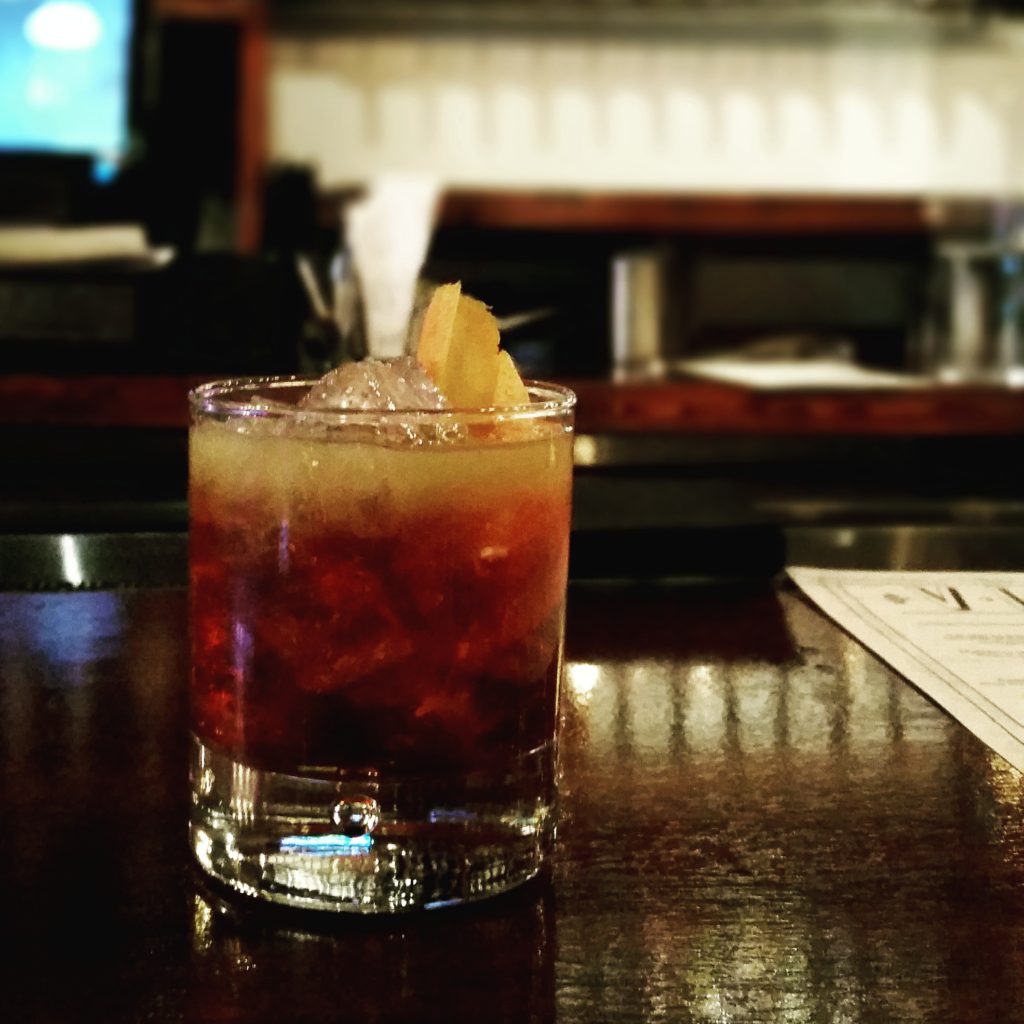
Vicini, we barely knew ye. The Frisco-based Italian restaurant’s all-too-brief run may have been a flash in the risotto pan, but it was long enough for Call to have some fun behind the stick. One slow Sunday, I put the lanky bar veteran, now assistant food and beverage manager at The Statler Hotel, on the spot by asking for something bitter and smoky. His off-the-cuff answer was genius, possibly my favorite on this entire list: A rush of French China-China and Italian Meletti anchored by mezcal and a rounding touch of Herbsaint – bitter orange and chocolate-caramel, grounded in depths of smoke and anise. Simply garnished with an orange peel, it was all I wanted in a glass, a mirepoix of worldly influences. “I’m a big fan of letting amaro drive the car and having the mezcal creep in,” Call said. So am I, Robbie. So am I.
SEPPUKU REALE – Andrew Stofko, Victor Tangos (2016)
Italian bitter liqueurs, furikake syrup, lemon, seaweed, furikake
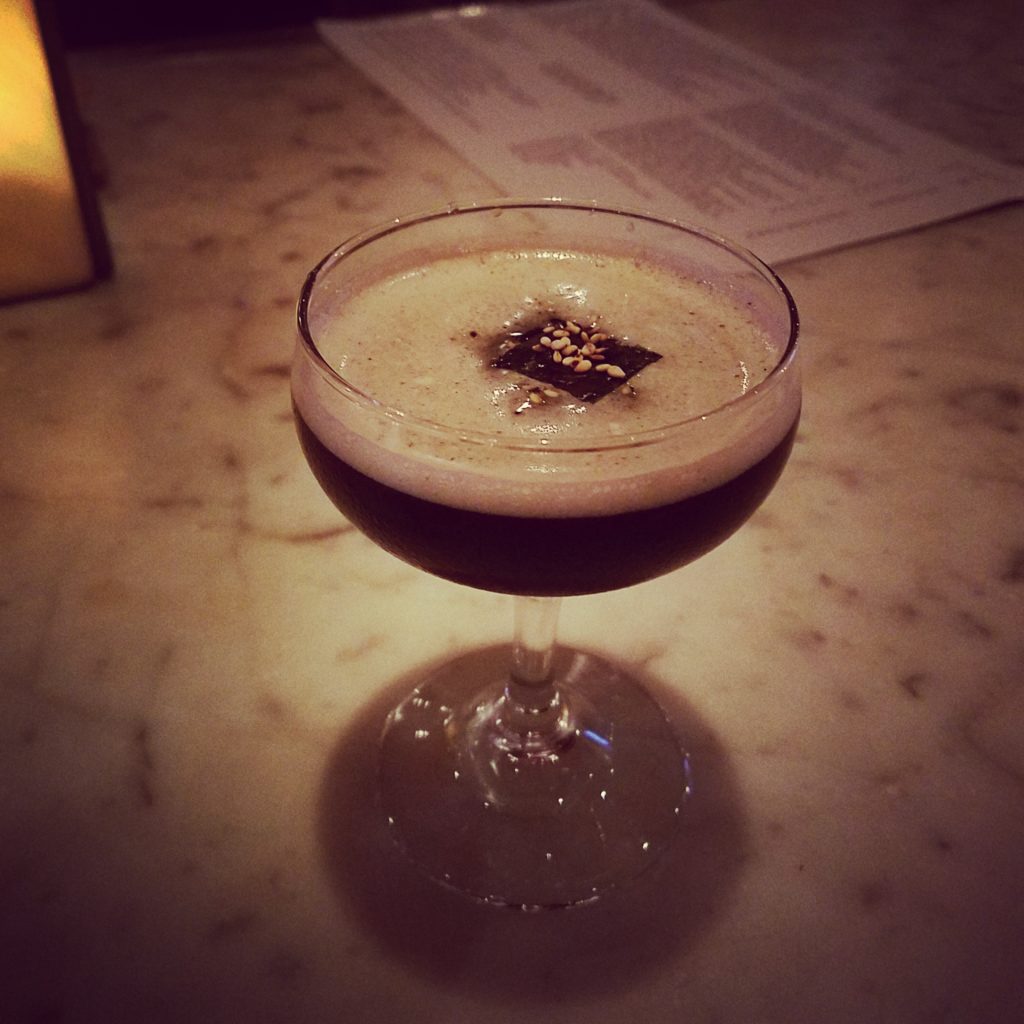
Amaro Montenegro is a jewel among Italian bitters; it leans toward sweet and herbal with its acridity evident only in tow. In 2016, Stofko, then at Knox-Henderson’s since-closed Victor Tangos, won a local contest with this unexpectedly intriguing taste detour: He reined in Montenegro’s sweetness with a syrup made from furikake (a Japanese spice mix of sesame seed, seaweed, sea salt and bonito flakes), upped the bitter component with Gran Classico liqueur, then added lemon to round it out. The citrus, however, turned the drink unpleasantly dark, so Stofko went all-in and added a bit of squid ink to turn it Guinness-black. The garnish was his piece-de-resistance – a sprinkling of roasted sesame seeds on a skiff of seaweed floating atop the inky sea. Bring the drink to your nose and your palate was awakened with hints of savory Japanese; instead, you got something completely different – bewitchingly bittersweet taste tempered with piquant nuttiness. “That’s umami in a glass,” said Stofko, now bar manager at Te Deseo in downtown Dallas. “I’m just glad (Victor Tangos) let me put it on the menu.”
SLEEPY COYOTE – George Kaiho and Andrew Kelly, Jettison (2018)
Coffee-infused Oaxacan rum, cinnamon syrup, ancho chile liqueur, horchata

Kaiho and Kelly, the personable one-two punch behind the bar at Jettison, Houndstooth Coffee’s sister bar in West Dallas, wanted to create a cocktail using horchata, the Mexican cinnamon rice milk. Specifically, as a popular after-dinner destination, they wanted to craft a dessert drink, so as fans of The Big Lebowski they devised this buzzy riff on a White Russian, using a base of banana-funky Paranubes infused with coffee, cold-brew style. To that they added cinnamon syrup and a splash of spicy Ancho Reyes liqueur, then poured it over crushed ice to unleash rich, fruity cinnamon coffee with a kick.
SOUTHPAW STREETCAR – Alex Fletcher, Henry’s Majestic (2016)
Cognac, persimmon shrub, citrus, clove dust
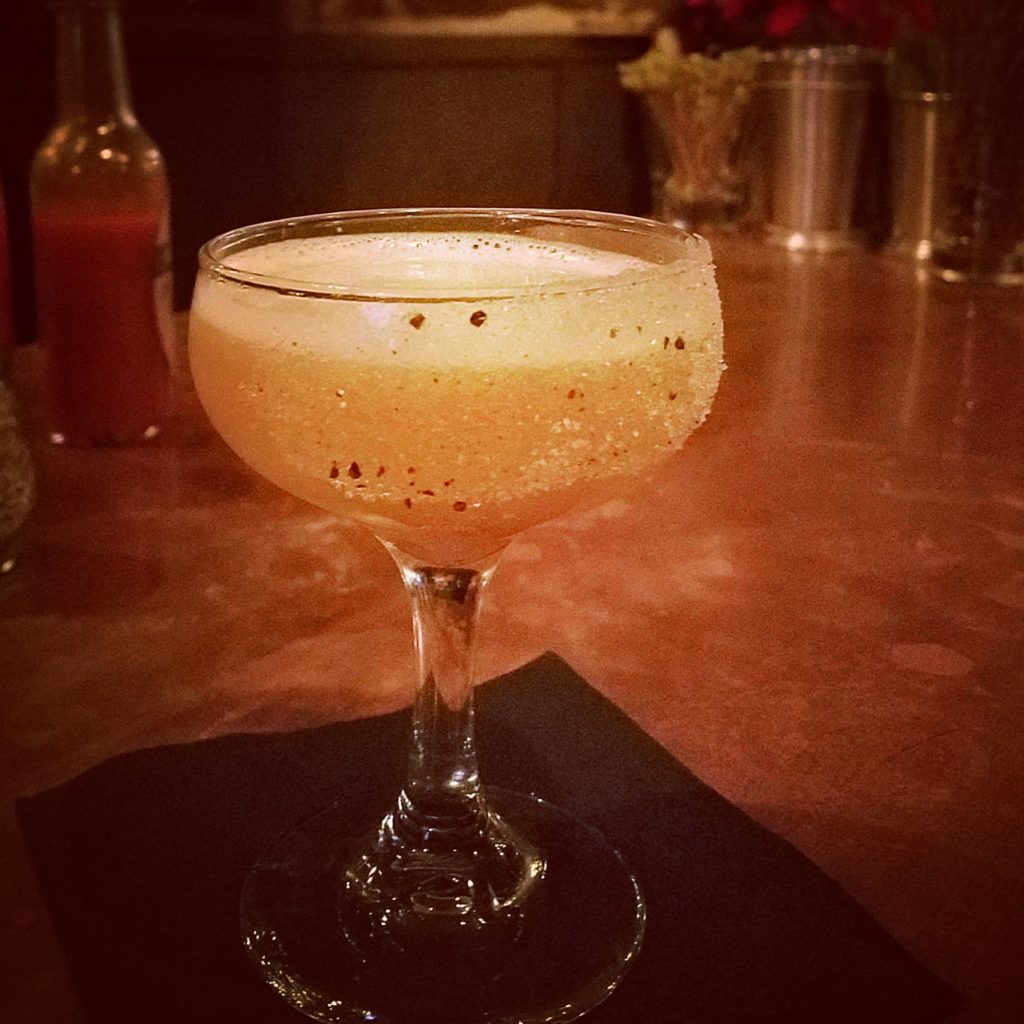
With drinks such as his miso-inflected Art of War (2013) and a daiquiri featuring a German smoked beer (2014), Alex Fletcher – now beverage director for Dallas’ Hospitality Alliance and AT&T Discovery District – has proven to be among the cleverest of DFW bartenders. In 2016, he concocted this winter wonder at Knox-Henderson’s Henry’s Majestic, where he was GM. Using a batch of his chef’s foraged persimmons, he crafted a shrub – a fruity, concentrated syrup tanged up with vinegar – and consequently my favorite Sidecar variation ever. A taste of the Southpaw Streetcar bounced along in tangy sweetness when suddenly, BAM! a burst of clove bathed you in winter-fire warmth. Sugar-plum visions danced in your head; in the distance, the jingling of sleigh bells and the sound of muffled hoofbeats in snow – and wait, was that Nana calling? Are the tamales steamed and ready? Oh wait – that was just Fletcher, asking if everything was OK and why your eyes had been closed for the last 10 minutes.
SPEAK OF THE DEVIL – Peter Novotny, Armoury (2015)
Pisco, plum liqueur, lemon, egg white, simple syrup, Port
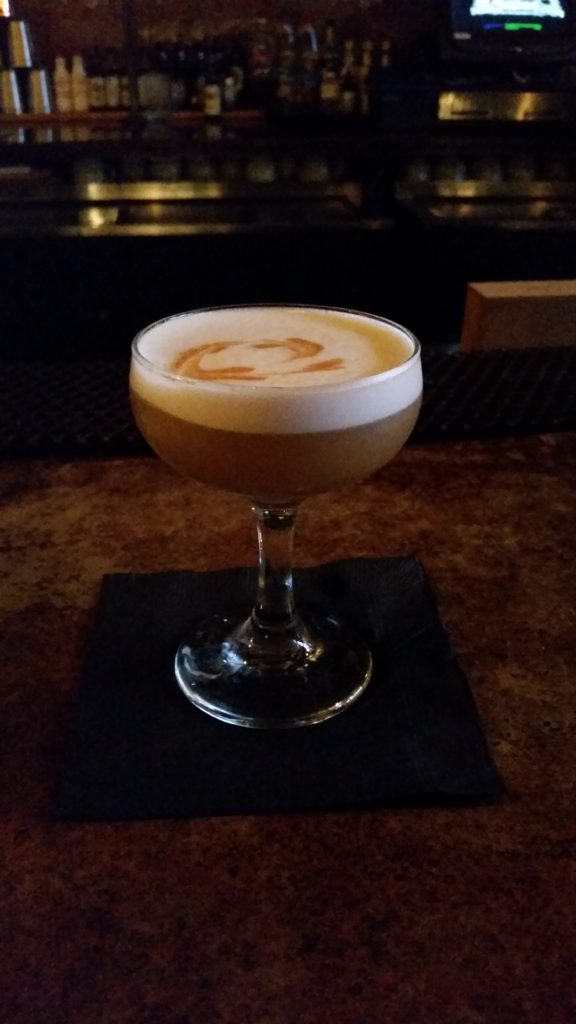
At Armoury in Deep Ellum, Novotny’s zippy take on the underappreciated Pisco Sour was inspired by his own Hungarian background. “I grew up on Hungarian liqueurs like Pecsetes,” he said, referring to a native apricot brandy. “It’s basically an eau de vie, like pisco. They’re like Hungarian moonshine.” As a fan of sours, he took the Pisco Sour recipe of un-aged brandy, citrus, simple syrup, egg white and Peruvian chuncho bitters and added Hungarian Slivovitz plum liqueur, with a boost of Pedro Ximenez Port for extra plum flavor. The result was a delightfully fruity-sweet homage to classic and cultural origins.
TIGER STYLE – Chad Solomon, Midnight Rambler (2016)
Batavia arrack, calamansi, palm sugar, pepper tincture, egg white, cassia aromatics
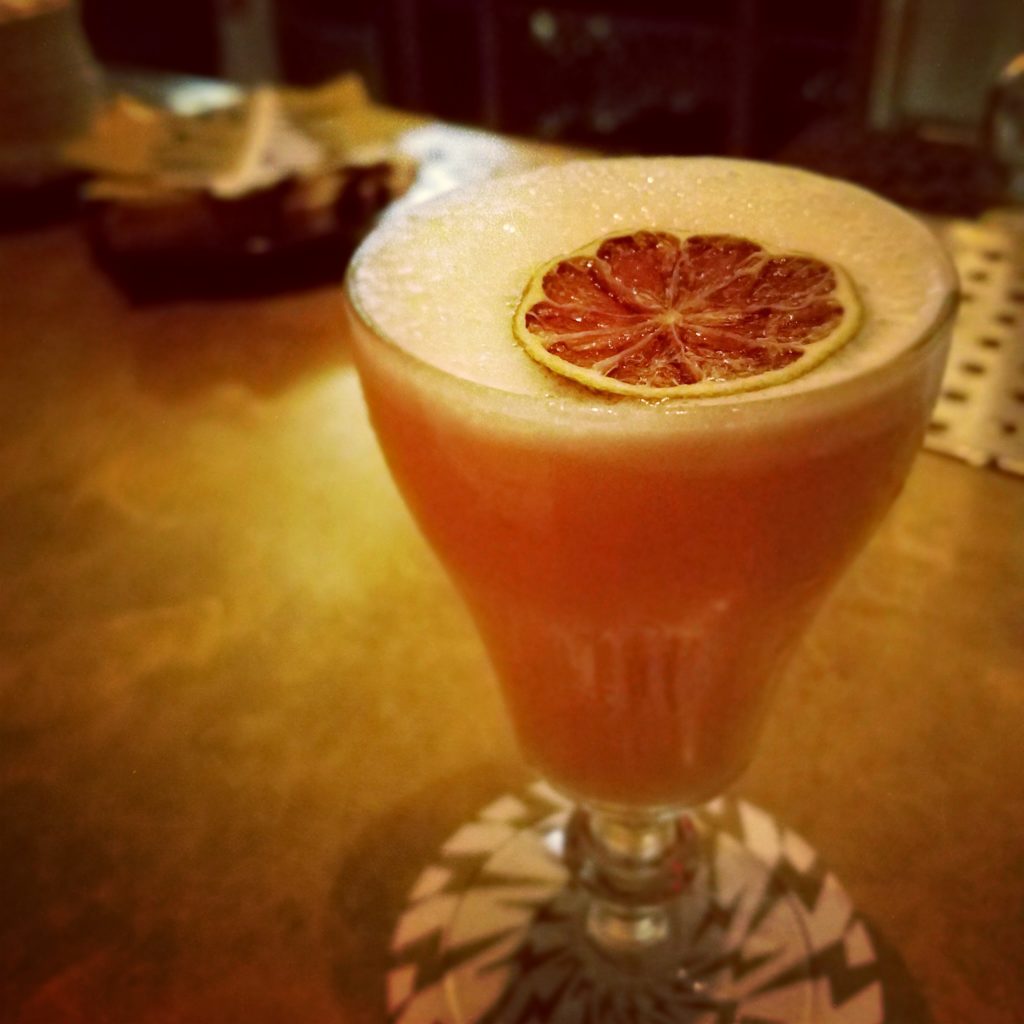
Chad Solomon’s seasonal drink menus at this downtown Dallas gem are thoughtfully thematic and often exotic, and he was at the top of his game in 2016; his Coconut Cooler, a gin-and-sherry blend sweetened with Southeast Asian pandan, highlighted spring and offered a hint of what was to come – a powerhouse summer menu of “gritty tiki” drinks reflecting Asian, African and South American influences. The Filipino-Indonesian-accented Tiger Style was my fave, a seemingly light mix incorporating a rum-like Indonesian spirit, passion-fruit-esque calamansi, palm sugar and a tincture made from pippali (Indian long pepper) that nonetheless packed a punch. A spritz of earthy cassia aromatics atop a dehydrated lime made it a triumph of creamy orange spice dashed with a hint of Fireball cologne. “The more you drink it, the more your lips tingle,” Solomon said, quite accurately. “It takes you into the exotic, and intentionally so.”
THE NEXT 10:
- Colada No. 2, Chad Yarbrough, Armoury D.E. (2017)
- Delight, Scott Jenkins, Hide (2017)
- Earth Wind and Fire, George Kaiho, Jettison (2018)
- Grapes Three Ways, Annika Loureiro, The Cedars Social (2016)
- Holy Smoke, Hector Zavala, Atwater Alley (2015)
- I’ll Get To It, Josh Maceachern, The Cedars Social (2013)
- Monkeying Around, Sam Gillespie, The Mitchell (2018)
- Sesame Daiquiri, Jordan Gantenbein, Abacus (2015)
- Stripper Sweat, Jackson Tran, Cosmo’s Bar & Lounge (2012)
- Two Thirty, Mike Steele, The Cedars Social (2013)
